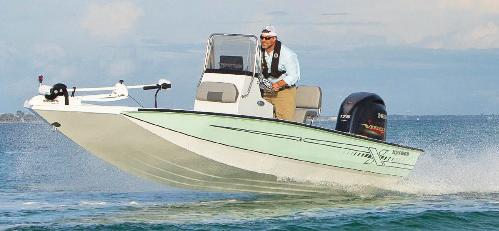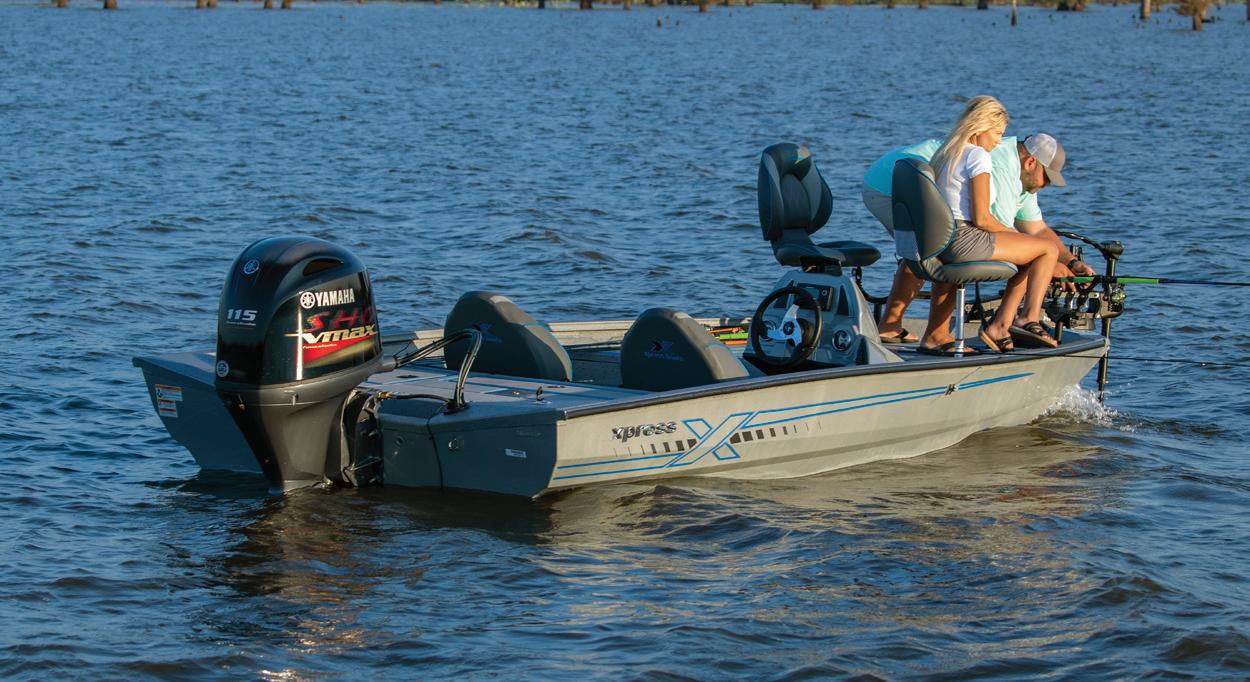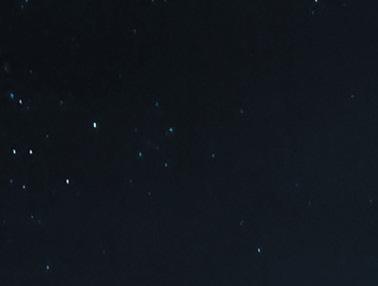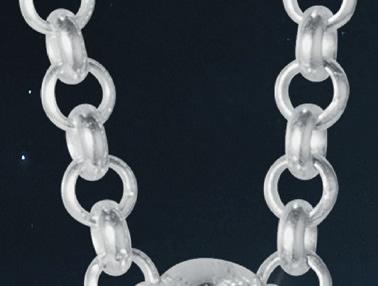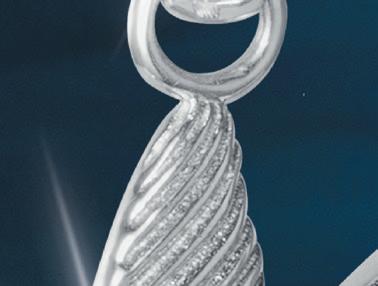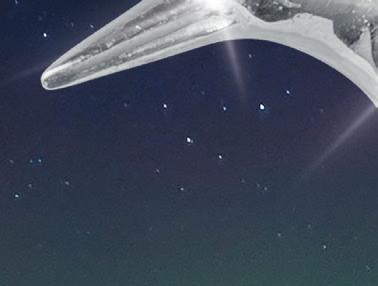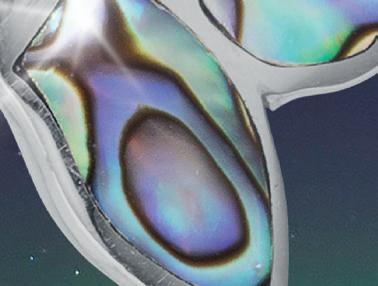


















































A watch that revolutionized timekeeping at a price equally as radical.
In the history of timepieces, few moments are more important than the creation of the world’s first Piezo timepiece. First released to the public in 1969, the watch turned the entire industry on its head, ushering in a new era of timekeeping. It’s this legacy that we’re honoring with the Timemaster Watch, available only through Stauer at a price only we can offer.

Prior to Piezo watches, gravity-driven Swiss watches were the standard bearer of precision timekeeping. But all that changed when the first commercially available Piezo watch came onto the market.
The result of ten years of research and development by some of the world’s top engineers, they discovered that when you squeeze a certain type of crystal, it generates a tiny electric current. And, if you pass electricity through the crystal, it vibrates at a precise frequency–exactly 32,768 times each second. When it came on the market, the Piezo watch was the most dependable timepiece available, accurate to 0.2 seconds per day. Today, it’s still considered a spectacular advance in electrical engineering.












“[Piezo timepieces]...it would shake the Swiss watch industry to its very foundations.”

Foundation For Economic Education

With the Timemaster we’ve set one of the world’s most important mechanical advances inside a decidedly masculine case. A handsome prodigy in rich leather and gold-finished stainless steel. The simplicity of the watch’s case belies an ornately detailed dial, which reflects the prestige of this timepiece.
Call today to secure your own marvel of timekeeping history. Because we work directly with our own craftsman we’re able to offer the Timemaster at a fraction of the price that many Piezo watches cost. But a watch like this doesn’t come along every day. Call today before time runs out and they’re gone.
Your satisfaction is 100% guaranteed. Spend some time with this engineering masterpiece for one month. If you’re not convinced you got excellence for less, simply send it back within 30 days for a refund of the item price. But we’re betting this timekeeping pioneer is a keeper.
Dear Angler,
Are you looking for a change in the New Year? We have plans to expand in 2023 and are seeking like-minded outdoor enthusiasts who share in our vision to bring our free publication to every town in America!
Do you want to work from home, be your own boss, and control your time and earnings? Then owning your own fishing magazine may be right for you!
Our ideal candidate for this unique business opportunity:
• Loves the Outdoors
• Loves Meeting People
• Has Prior Business Experience or at Least Three Years of Sales Experience

• Has Good Credit & Driver’s License
• Is a Self-Starter
If you or someone you know is looking for an opportunity to own their own home-based business and earn a living in the outdoor industry, please contact us at 321.777.2773 x 1 or email info@coastalanglermagazine.com.

Ask us if we have a franchise territory available near you! We have freshwater and saltwater franchise territories available throughout the US and abroad!
Tight lines, Ben Martin
Editor In Chief
Coastal Angler Magazine
The Angler Magazine



www.CoastalAnglerMag.com
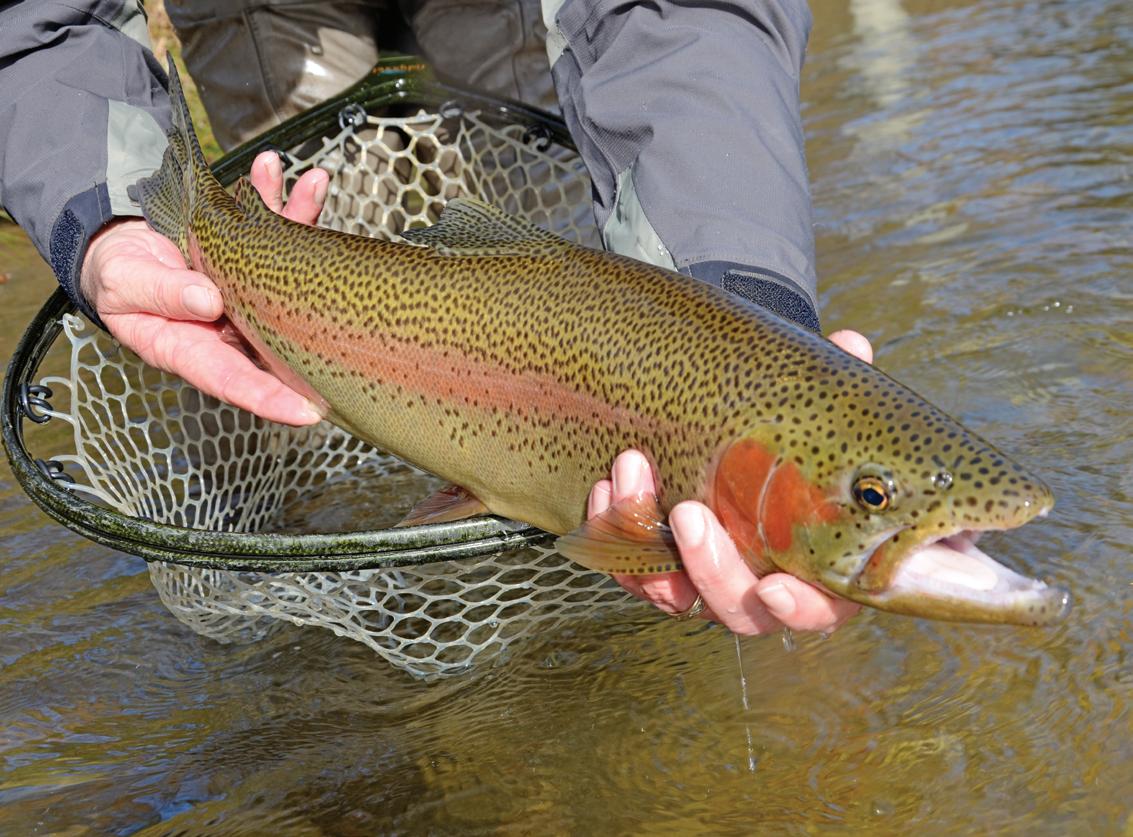 By Nick Carter
By Nick Carter
Trout like cold water, but there’s no denying the slow down that occurs on most wintertime trout fisheries. When water temps fall into the low 40s and below, insect life and other food sources are less prevalent. Trout metabolisms slow and they go into energy-conservation mode. They are content to hover near the bottom out of heavy current and feed only when an easy opportunity arises.
That said, fish still need to eat, and intrepid anglers will find joy in the seclusion of a wintertime trout stream. Here are some tips to raise the odds of a great wintertime trout trip. Dress warmly, wade carefully and savor the taste of the ice you suck from your rod guides.
1) Choose Destinations Wisely: Winter is not the time to explore high-elevation brook trout streams. Instead, float a tailwater, where water temps are consistent year-round, or go to lower elevation streams that are a bit warmer. For a target-rich environment, try out a delayed-harvest fishery. They are stocked heavily through the cooler months.
2) Fish Warm Spells: Two or three days of consistently warmer weather are primetime in terms of winter trout fishing. Everything in the stream, from the trout to the bugs and baitfish they eat, perks up.
By the same logic, the best bite is usually during the warmest part of the day. Sun warms the shallows, bringing out the tiny little midges, black stoneflies and blue-winged olives that are wintertime staples. Even if the action is subsurface, trout will take advantage of easy feeding opportunities.
3) Fish Meticulously: Unless trout are visibly rising, subsurface is the way to go. Turn your attention away from the riffles where rainbows pop dry flies in spring, and look to the deeper, slower runs. Pick them apart with nymph rigs. Keep in mind that most winter food items will be small, but fish a variety of sizes and patterns at the same time and cover every inch of each run vertically and horizontally. The idea is to hit a fish in the nose, and this is best achieved fishing slowly and carefully.
If you want to tempt a giant trout, it’s a good time to dead drift a big streamer with the same meticulous patience. Don’t hesitate to fish a heavy streamer deep under an indicator. Sometimes a big mouthful is enough to convince a lock-jawed bruiser to eat.
4) Fish Safely: Flooding your waders can kill you when it’s frigid. During cold snaps, consider fishing near the truck, where a quick jog can put you in a heated cab if you get wet. If you do go into the backcountry, take a dry-bag with fire-starting equipment, a towel and a change of clothes.
Wherever you fish, wade carefully, avoid stepping on frozen-over rocks, kick any snow off your boots before entering the water and avoid taking chances like wading deep water or heavy flows.
Nick Carter is the author of “Flyfisher’s Guide to North Carolina & Georgia.” Contact him at nsc8957@gmail.com.






Berkeley County is a wonderland for outdoor enthusiasts, sports buffs, adventure seekers, and water lovers. From exemplary fishing for striped bass, or a trophy largemouth bass, to our hiking trails and water activities, along with scenic outdoors where you can catch a glimpse of white tail deer and gators, Berkeley County has activities to fit all visitors and families. Learn more about Berkeley County at: exploreberkeleycounty.com





Next stop Manaus, Brazil! It all started when my good friend Capt. Johnny Stabile called.
J: I know what you’re going to say before I even ask.
G: What is it?
J: Do you want to go Peacock fishing in Brazil?



G: When?
J: We would leave 13 days after our Alaska trip.
Of course, my response was, “Ok, sounds great!”
That would give me just enough time to get back from Alaska, fulfill orders for my business, and get things ready to head south. We flew out of Miami, and with a layover in Panama City, Panama met up with several other fishermen on the expedition. After a very long night of traveling, we finally landed in Brazil and hopped on a quick seaplane ride to the Rio Matupiri for six and a half days of non-stop fishing!
We stayed aboard the Amazon Legend with a very accommodating crew of 14. We ate like kings and fished hard. Our typical day of fishing consisted of getting up before the sun for a quick breakfast and loading into skiffs to spend the day zipping around to the guide’s best fishing spots. We threw a variety of lures, mostly topwaters like big choppers and walking baits. Johnny’s favorites of the trip were a Rebel Jumping Minnow and a Borboleta Woodstock 10.5 cm. He wore out the peacock bass on that Jumping Minnow. I threw bucktail jigs, and they produced the largest number of fish, but for Johnny it was all about the BIG’UNS!
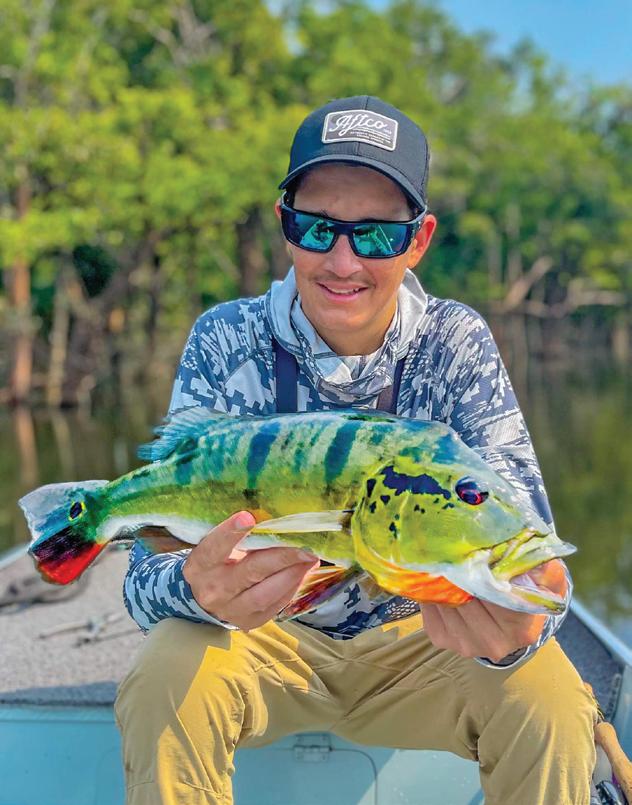
Johnny loves to fly fish, so one special thing about fishing in Brazil for him was catching several nice fish on the fly rod with easy-to-tie flies that he made myself. These fish are so much more aggressive than the peacock bass you find in south Florida. For a little perspective, we caught more than 350 peacocks and more than 50 piranha along with several other exotic species. The average peacock was 2 to 3 pounds, and Johnny’s biggest weighed more than 8 pounds. One person in our party caught a big peacock that pulled the scales to nearly 14 pounds.
After a long morning of non-stop action, sometimes we would take a quick lunch break and hide in the shade of a tree for a wonderful shore lunch. The guides packed everything for remote meals on land, where they cooked native fare on an open fire. While they cooked, we relaxed in hammocks with
plenty of cold drinks and the opportunity for a quick nap before lunch was served. Many of the fish we caught contributed to these lunches, and there were also steaks and chicken available with all the fixins. Homemade salsa and native seasonings complimented the meals perfectly. After a relaxing lunch, it was back on the skiff and back in the action!
After afternoons of fishing, we indulged in fivestar dining and the most important part of the trip, air conditioning! The crew made up our rooms, did our laundry and prepared dinner every evening. Specialty cocktails were also provided, if that’s your fancy, but Johnny’s favorite was the freshly squeezed juices. He’s already looking forward to the passion fruit juice when we return next year!
Johnny shot some great video of our trip. Check it out in the December edition of The Angler Video Magazine

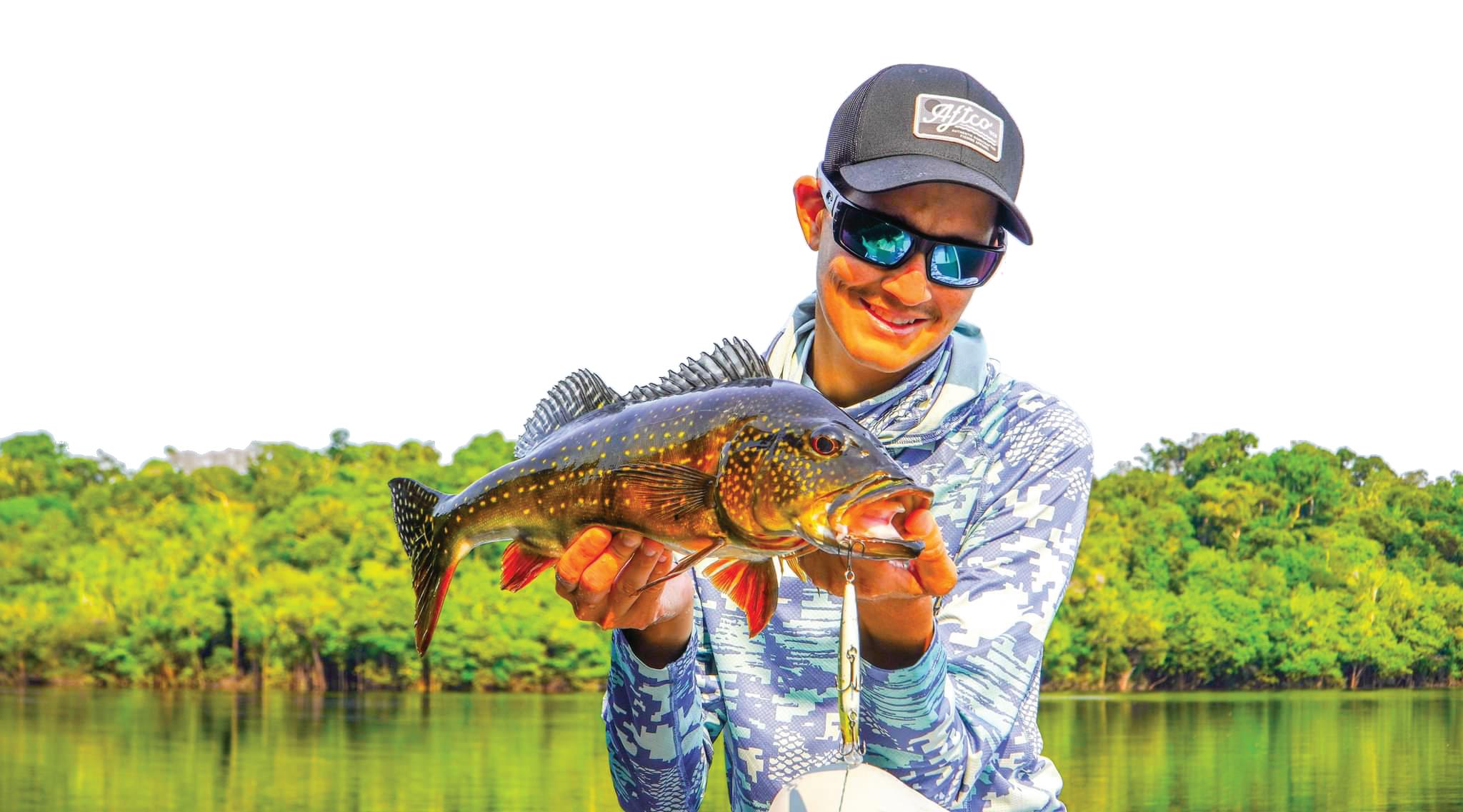
If you are interested in a Brazilian fishing adventure, e-mail Johnny at captain@ SFLFishingCharters.com or Gary at gary@purgeright.com.
 By Capt. Johnny Stabile and Gary Turner
By Capt. Johnny Stabile and Gary Turner
For as long as I can remember, offshore bottom fishing is what we look forward to during the last half of November and the entire month of December. The week of Christmas has always been considered the apex of the bottom-fishing year.



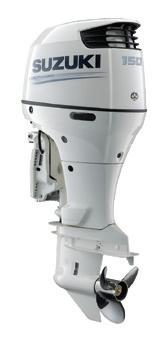


You can see the move of the big snappers marching offshore on the edge of the colder water. This will pile big snapper and other bottomdwelling species up on certain staging areas, along with a clean water temperature line that also stacks up the kings and wahoo. Keep a light line bait out while you’re bottom fishing. There is no telling what you’ll catch and on what baits.
Of course, I love a pinfish, grass grunts or sailors choice for grouper and snapper baits for more than one reason. 1) They get bites from the target species; and 2) they eliminate most of the trash bites from grunts, pinkies and sea bass.


Yes, I love a live bait on a jig, but don’t ever forget that a big grouper also loves a big chunk of cut bait. We have seen a huge uptick in amberjack and almaco jacks in the past few


years for some reason. This is an excellent bait source! I like to keep one of the first, smaller, amberjacks that come up just for this cut-bait option. The big chunks of cut bait do
of my bottom-fishing strategy. This is also the reason I take a couple boxes of squid on every trip. I start every new post-up on a ledge or live bottom area with everyone firing down whole squid every drop. I don’t care what they are catching. It’s usually grunts, pinkies or seabass, but what is really happening on the bottom is the squid are being ripped to shreds and small pieces are swirling around and creating a chum slick. After several volleys of whole squid, I change it up to live pinfish, grass grunts or other live baits on a jig.

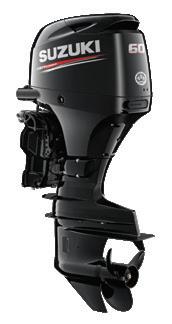
Grouper and big snapper see the live bait as a smaller fish that was grabbed by a crab while feeding on small pieces of squid. It’s a winning technique that has been very successful for me and other Decoy Jig users for years now. It is also new to the fish, tackle-wise.
two things. They get bites and they also create a “chum slick” on the bottom right where you are fishing. When the cut bait gets pecked at, all the small pieces of flesh swirl around as it’s being eaten.
This is one of the most important aspects
The beauty of this cold water line moving farther offshore with every cold front creates opportunity for a variety of species. You never know; keep firing down cut bait and setting the hook on “strange feeling bites,” and you might even catch a big deep-water lobster like the one in the video below.
Check out some awesome bottom fishing videos at https://youtu.be/w1YmT6M0ObQ.













grouper for the table.
e harvest will be very limited and tightly regulated, and permits will be issued by random drawing of applicants who applied during the Oct. 15-30 deadline. e cost to apply was $10 plus fees and permit at GoOutdoorsFlorida.com.
Details for this limited, highly regulated harvest include:

• Total recreational harvest of up to 200 goliath per year, with a maximum of 50 from Everglades National Park.
• A goliath harvest permit and tag, issued via a random-draw lottery ($150 for residents, $500 for non-residents, plus fees) are required to participate. Permits and tags are non-transferable and no exemptions apply.




• A limit of one sh per person per open season with permit and tag.
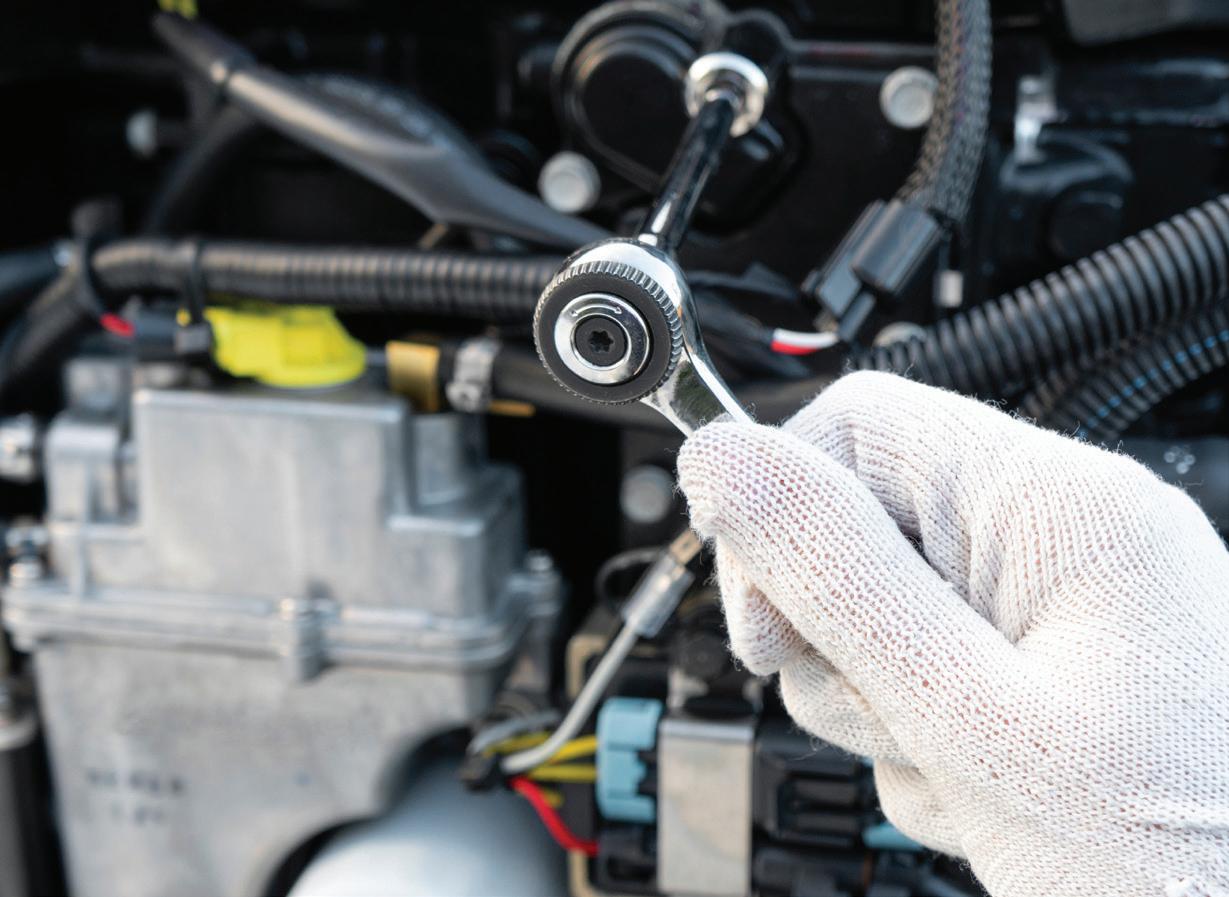

• An open season from March 1 through May 31.
• Hook-and-line as the only allowable gear.
• A slot limit of 24-36 inches total length.
• Post-harvest requirements including proper application of the tag, reporting harvest data and submitting a n clip for genetic analysis.
• Harvest will be permitted in all state waters except those of Martin County south through the Atlantic coast of the Keys, all of the St. Lucie River and its tributaries, and Dry Tortugas National Park.
• Harvest will continue to be prohibited in federal waters.
“ e highly regulated, limited take of goliath grouper is an exciting and unique opportunity to provide access to this resource a er decades of closure, and we believe limited access is sustainable,” said FWC Commissioner Robert Spottswood. “We also look forward to collecting the post-harvest data to help guide future management decisions for this species.”
In October, the Florida Fish and Wildlife Conservation Commission opened the application process for recreational harvest of goliath grouper in Florida state waters. Harvest of the species was banned when the shery collapsed, and the 2023 spring season will be the rst time since 1990 that recreational anglers will have an opportunity to keep a goliath

is opportunity is intended to provide additional access to this shery while balancing the values of various stakeholder groups. Adult goliath grouper will continue to be prohibited from harvest statewide as well as goliath in heavy dive ecotourism areas. is limited harvest is not intended to address shing depredation concerns.
For more information about the goliath grouper harvest permit and details on the permit lottery and eligibility requirements, visit FWC’s Goliath Grouper Harvest Permit webpage.

Technical schools charge tens-of-thousands in tuition. With the Mastry Suzuki RePower TTP (Technician Training Program), you will work with and learn from factory certified technicians and participating in the Suzuki on-line training course all while earning an hourly wage. After completing the Suzuki on-line training course and earning your Suzuki Certification you will be eligible for the Mastry Suzuki RePower Tenured Technicians Bonus Program.



Join the Mastry Suzuki Certified Technician Team and Enjoy the Mastry Suzuki RePower Tenured Technicians $1-Grand-A-Month Bonus Program


After joining a Mastry Suzuki RePower Center as a certified technician, every month you will accrue $1,000 in bonus opportunity. After one full year of service you will be tenured and eligible to receive all 12 months of accrued bonuses, or $12,000.















As a Mastry Suzuki RePower Tenured Technician along with your regular pay, each month you will be eligible for a $1,000 additional bonus.
At every Mastry Suzuki RePower Center, Certified Technicians are held in the highest regard. Join a passionate team of professionals with the common goal of excellence through constant improvement. With 12 locations across Florida there is a Mastry Suzuki RePower Center near you that wants to appreciate you and your abilities

Mastry Engine Center
Clearwater, Florida 800-545-4574

Twin Screws Marine Fort Myers, Florida 239-330-3387
Innovation Marine Corp. Sarasota, Florida 941-355-7852

Marina One Deerfield Beach, Florida 954-421-2500

Bayfront Yacht Works Sarasota, Florida 941-349-9449
On Site Marine Ruskin, Florida 813-727-5403
Boat Services Group Key West, Florida 305-320-0555
McKenzie Marine St. Augustine, FL 32084 904-770-2488
Lou’s Marine, Inc. Gulf Breeze, Florida 850-932-0701
Atlantic Marine Store Hialeah, Florida 305-826-2202
Custom Marine Service Panama City, FL 850-872-9191
Oyster City Suzuki Apalachicola, Florida 850-653-8030


With their oddly shaped mouths and a diet made up of crustaceans and mollusks, hog sh were once thought to be a species too di cult to target with rod and reel. All that changed over the last decade or so, as captains gured out how to speci cally target these delicious and beautiful bottom-feeders.

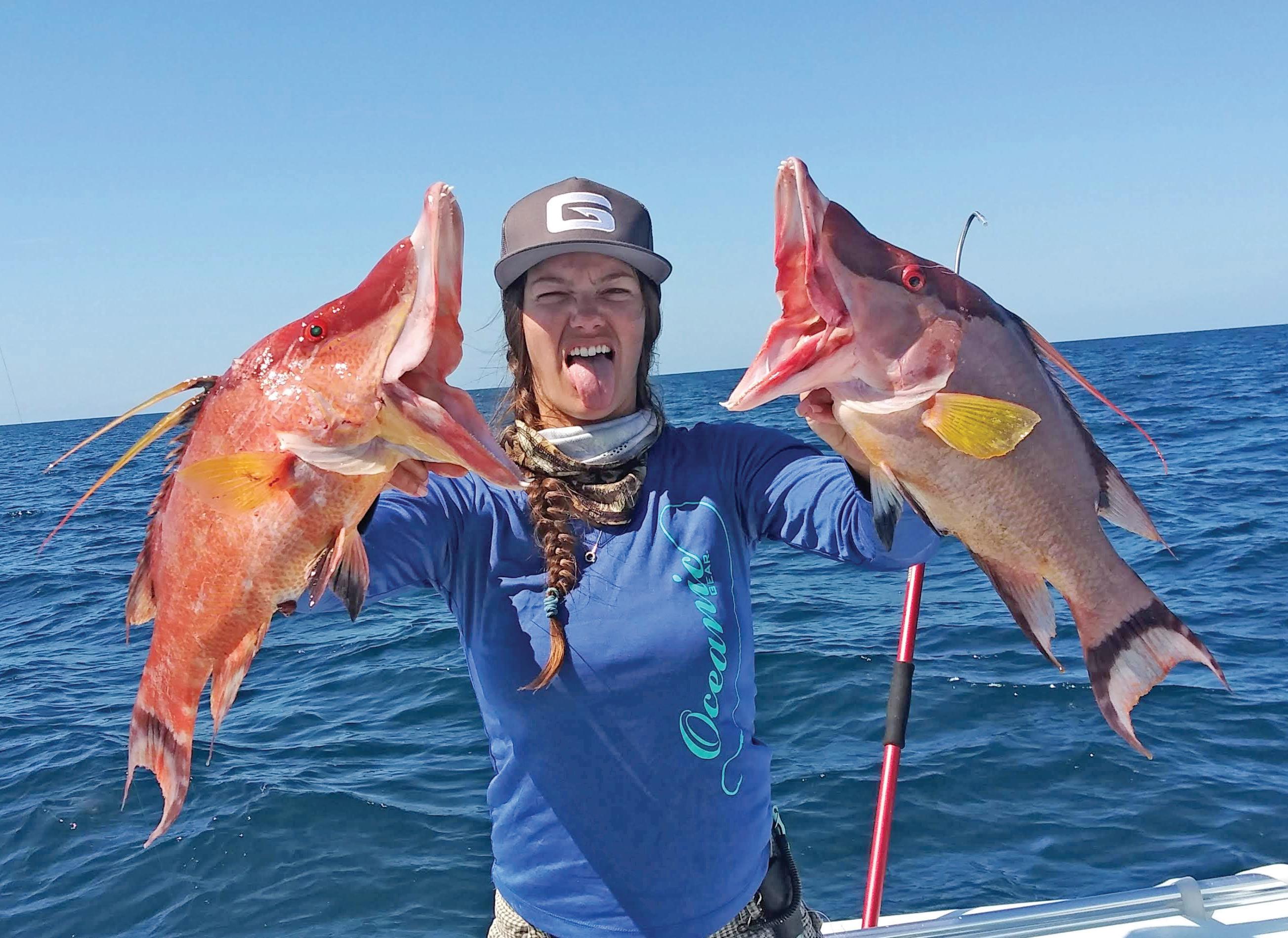
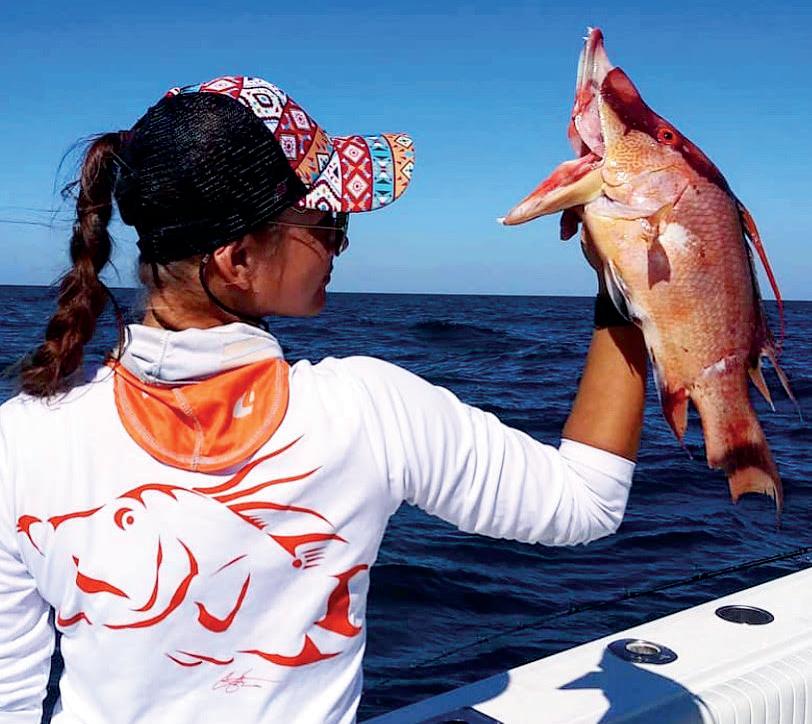
Wintertime is the best time to target hog sh on the Gulf Coast. From late November into March, they congregate on nearshore reefs and ledges to spawn, which makes them a great option in a season when rough weather can prohibit long runs to deep water.
Hog sh are protogynous hermaphrodites, which means they are all born female and change into males as they age. A single male will tend a harem of numerous females, which means nding good hog sh bottom can result in quick limits of ve sh per angler, but few of them will be large mature males. ere is a 14-inch minimum size limit in Florida, and hog sh of 18 or 20 inches are considered very good sh.
is time of year, dozens of hog sh can be found congregating together on reefs, rockpiles, and hardbottom in 50 to 75 feet of water. In most places, this can be found inside of 20 miles o shore. A prominent ledge with lots of growth is prime hog sh habitat. ey like to hover around reefs and use their long snouts to
probe cracks or root in the sand for critters like sand eas, crabs and snails.
Once you nd them, the secret to catching hog sh is pretty simple. Like just about anything else that swims, they are suckers for shrimp. Big live shrimp, fresh dead shrimp and even stinky thawed shrimp are irresistible. Just leave it right on the bottom, where a hog sh is likely to nd it while rummaging around in the sand. e rigs used to catch hog sh are also pretty simple. A knocker rig with a 1- or 2-ounce slip-sinker right up against a 1/0 circle hook will keep that shrimp right on the bottom. A half or 1-ounce circle-hook jig head will do the same thing. Some successful captains swear by hogballs, which are painted weights tethered to a hook by a small chain.
Regardless of the rig, you don’t need to go too light because hog sh aren’t particularly leader shy. A 5000 series reel with a comparable rod and 25-pound braid to a 30-pound leader is enough to haul even the largest hog sh up from depth. e trickiest part of catching hog sh is getting a good hook-set. You’ll want a little bit of slack in the line, which allows them
to pull that shrimp into their snout. Typically, you might feel or see a subtle rst bump, which will be followed by a second bump as they actually take the bait. Allow the sh to pull the line tight before reeling down and swinging the rod to drive the hook home.
For more information, go to coastalanglermag.com.
PhotoS courtesy of Capt. Quinlyn Haddon
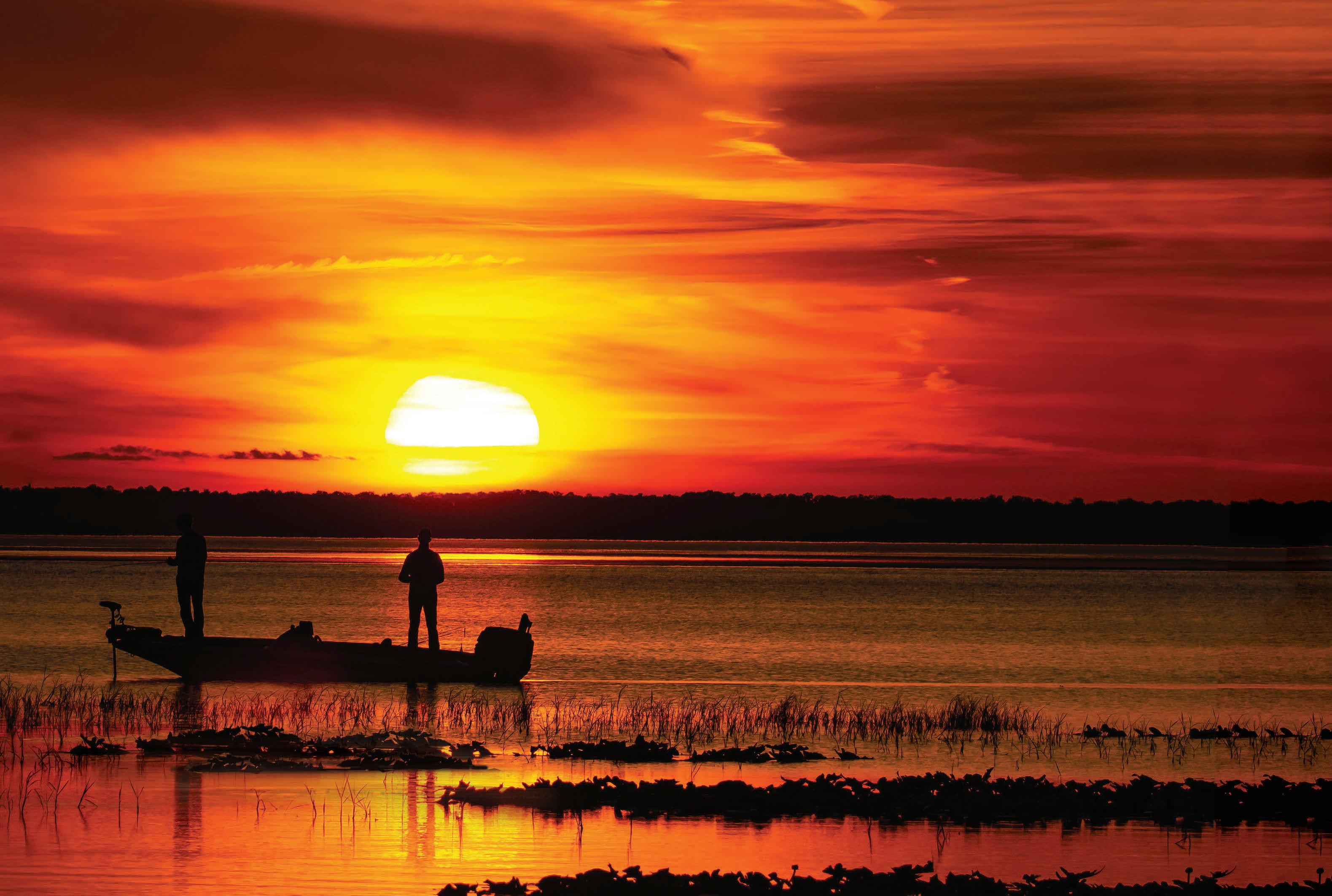

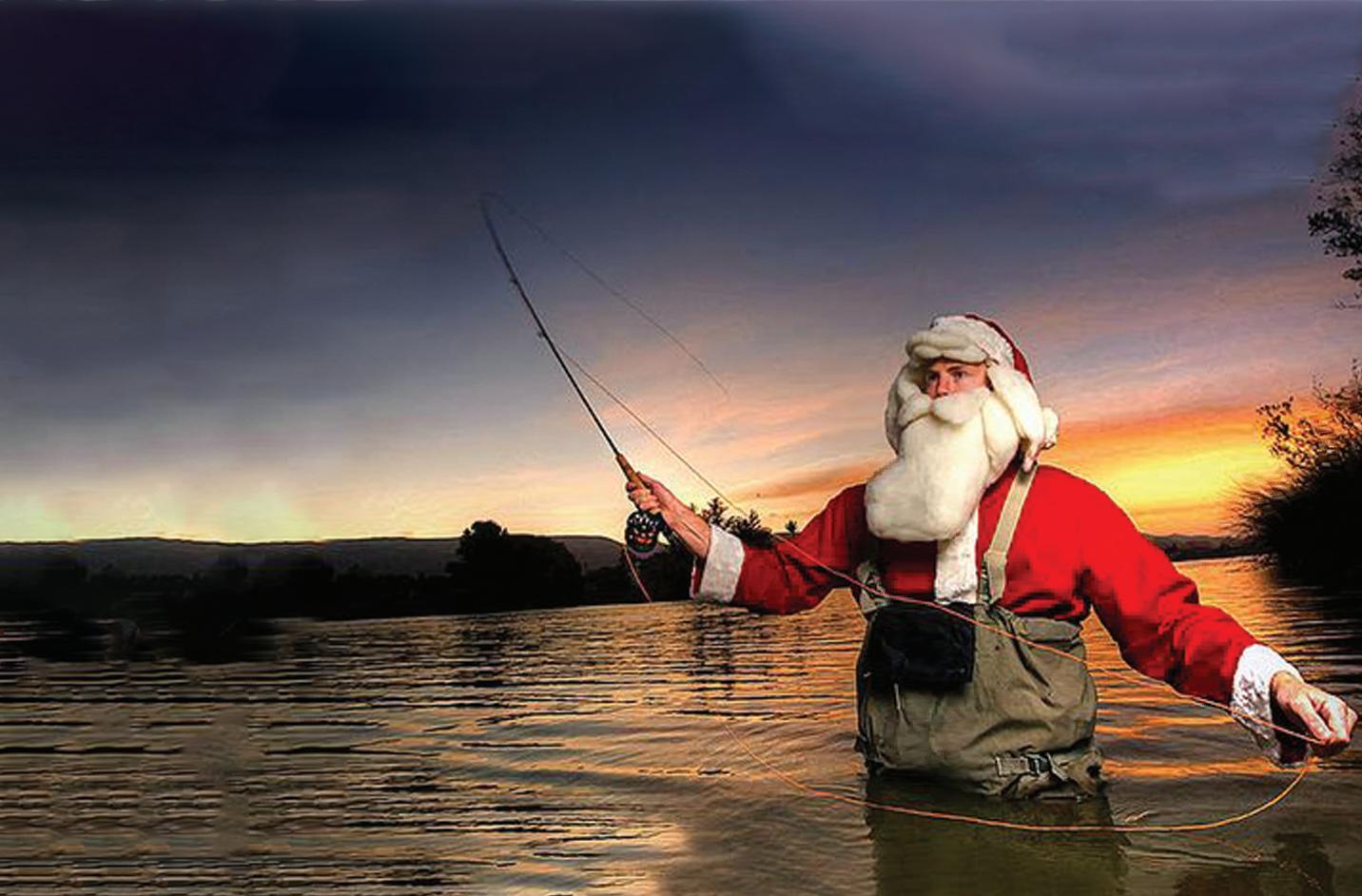


Surf Expo is gearing up for its upcoming in-person trade show to be held Jan. 4-6, 2023 in Orlando, Fla. at the West Hall of the Orange County Convention Center.









Surf Expo’s January show has become known as a one-stop shop to preview and get a rst-hand look at the latest and greatest apparel and accessories that will lead the industry in 2023.
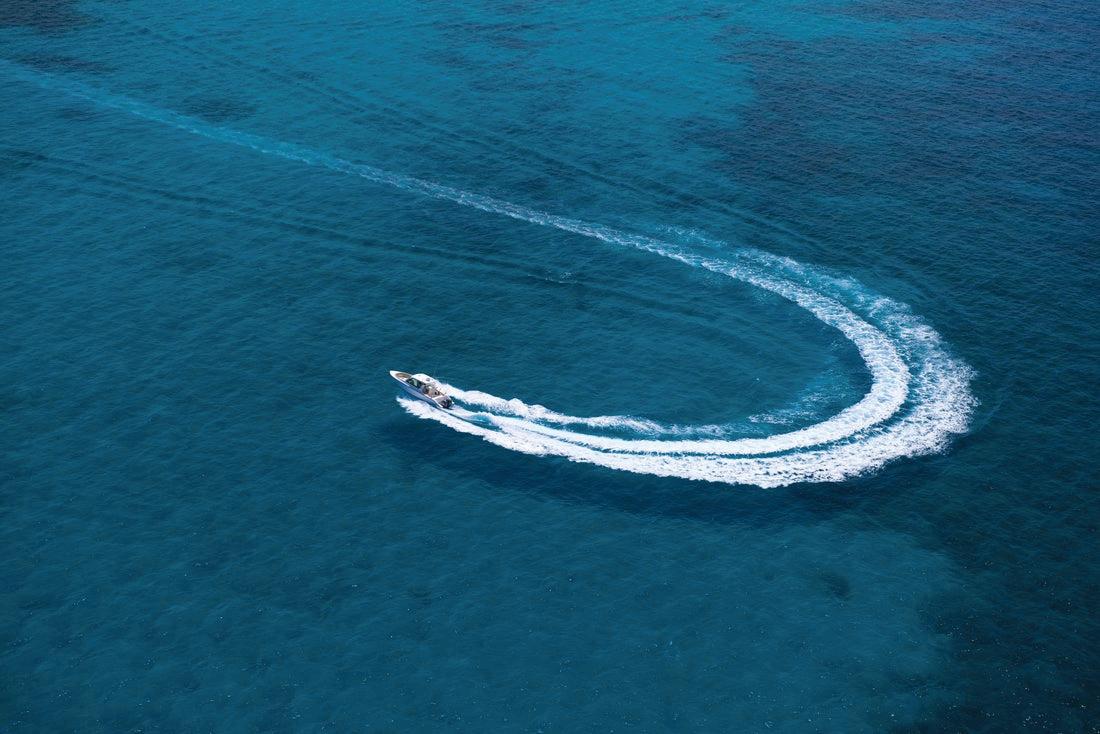
A few of the brands featured in the Bluewater section are AFTCO, HUK, Toad sh, Marsh Wear, Bajio, Dark Seas, Salty Crew, i-Sea, XTRATUF, CHUMS, Hey Dude, KEEN, Guy Harvey, Saltwater Born, Kangaroo Coolers, Reel Legends, Bimini Bay Out tters, Lake Time Supply Co, Coyote Eyewear USA, Skinny Water Culture, Croakies, Preston 1947 by Ebinger Bros, Tormenter Ocean and many more.
ere are quite a few new brands you’ll nd in Bluewater making their Surf Expo debut, including Grateful Diver, Red n, Palmetto Chair & Umbrella, Push to Star, Boat Bitch Apparel, Burnside, Columbia SPG and more.
e Bluewater section was designed with the buyer in mind—so they can see all the key inshore and o shore apparel and accessory brands in one
location. ey’ll nd products ranging from lifestyle and technical apparel to footwear, outerwear, sportswear, t-shirts, sunglasses, gear and lots more.
Steven “Fish” Fisher, Surf Expo’s senior buyer relations manager works directly with buyers from marinas, out tters, boat dealers and bait & tackle shops, “ ere’s a de nite need for product, people from Florida and across the U.S. as well as the Caribbean, Puerto Rico and all over the globe are registering and excited to come,” he said.
“We work hard to listen to and take care of all our customers, including brand exhibitors and retail buyers,” said Emerald SVP and Surf Expo Show Director Roy Turner. “We are thrilled that the winter show continues to grow post pandemic and are excited to welcome an impressive list of brands to Orlando.”
Features of the show will include the Bluewater Lounge, the 2023 Florida Shape O , educational sessions led by e Underswell’s Derek Sabori and Retail Smart Guys’ own Dan Jablons, plus fashion shows, happy hours and networking events. Surf Expo will be announcing its full line up of special events in the coming weeks.
Registration is free for quali ed buyers. For more information, contact steven. sher@surfexpo.com. For more information on the upcoming show, visit www.surfexpo.com.

A mackerel’s ability to slice through line as if they were wielding a set of Ginsu knives leaves many anglers frustrated a er losing tackle. But if you target these speedsters with the right equipment, they can make for a fun day of action packed shing.


I like light spinning like a GLoomis GLX PR844 with a 2500 Stradic or an 8-weight NRX y rod with a Nautilus NVG 8/9 with Scienti c Angler sinking line. Chances are anything less than 30-lb. mono will be shredded immediately, so it is imperative to use wire leader when mackerel are around. Even then, they are known for hitting the line at the swivel connection from wire to mono, so it’s best to have several rigs ready. Also, make sure your swivels are black and not silver, these guys like shiny things. All that said, a spoon or a small jig rigged on wire will usually last a while.
Best of all, once mackerel move in, they are typically found right in the passes to within a few miles of the beach. I nd the sh o shore tend to be larger, so I like to target them. A 3-pound mack will make a blistering rst run that is reminiscent of a bone sh, and they are much less spooky than bones. e easiest way to nd them is to look for birds working. at’s a tell-tale sign. Reefs and good hard bottoms that hold bait are great places to search, as well. ese types of spots can be trolled or chummed to keep the action close to the boat. A standard chum bag will bring the school well within casting range for both conventional and y shermen. Just throw out something shiny, move it fast and you’ll hook up quickly.
Mackerel get a bad rap as table fare, as they are oily and can be strong tasting. at oiliness makes them perfect for smoking, and that, too, could not be easier. Simply llet the sh, leaving the skin on. Salt them liberally and let them rest in the refrigerator for about an hour. Rinse the salt o and add some Cajun seasoning to the sh and smoke over indirect heat at 250 degrees for about two hours. It is done when it akes easily o the skin. Smoked mackerel tastes great on its own in a salad or rice bowl, and it’s fantastic when made into sh spread.
As the water temperatures drop this time of year, bait sh shows up in force. Pods of bait sh are followed closely by schools Spanish mackerel. is o en-overlooked speedster is viewed as nuisance by some anglers, but mackerel are a blast on light tackle and y rods if you gear up correctly.


If you are looking for some hot action with minimal work, grab some wire and enjoy the return of the mack.
Will Schmidt is a seasoned tournament angler who has been writing about shing for more than two decades.
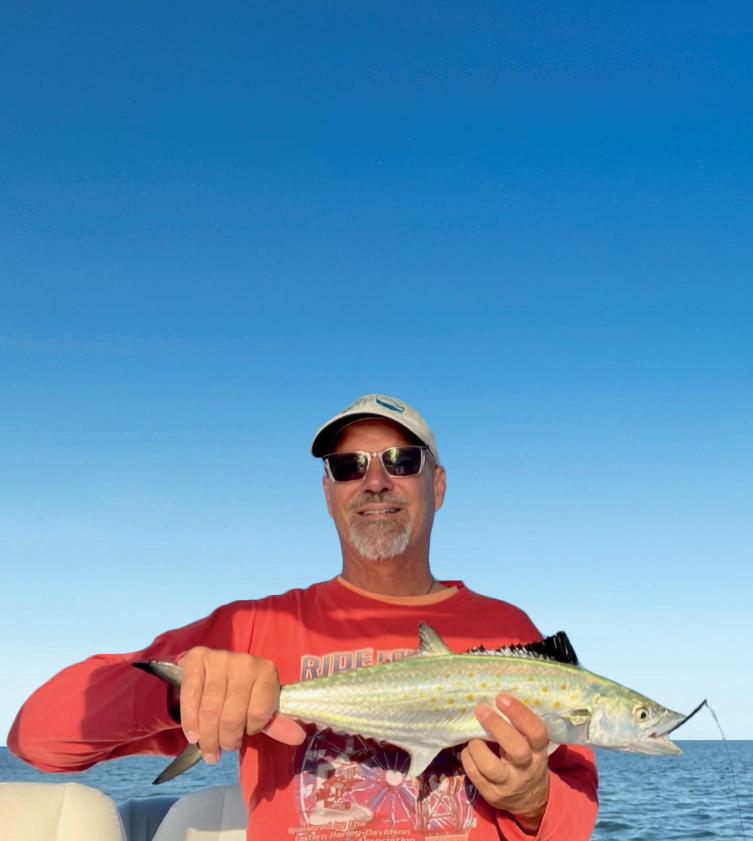









Ajerkbait is a good idea whenever bait sh are plentiful. A jerkbait’s natural movement, size and resemblance to what the sh are already eating make this bait deadly.
ere are many scenarios I would consider good times to throw a jerkbait. One of the best situations you can encounter is when sh are actively feeding on bait sh and schooling. When bass are doing this, throwing a natural-bait sh-colored, shallowdiving jerkbait is an awesome way to replicate a dying bait sh. It at out gets bit, even when you can’t nd anything else they will touch.
Another awesome way to use a jerkbait is to blind cast in areas where bass are staged up and feeding. If you can identify bait sh already in an area, this makes the scenario even better. A lot of times this pattern sets up along grass lines, rip-rap banks and in pockets close to areas bass use to spawn. Depending on water clarity, I like a naturalcolored jerkbait or one with a little bit of chartreuse. Use a shallow or deep-diving jarkbait to match the depth you’re targeting.
Jerkbaits are also a great option for bass that are suspended with bait. Typically these sh are less pressured because they are harder to nd. You’ll need to spend some time searching with your electronics, but nding
this scenario and knowing how to target the bass can line up as some of the most fun shing you can imagine.
is can happen anywhere, but typically it occurs on points and pockets where sh can ambush the bait easier.
I use forward sonar a er I locate an active area and use the jerkbait to imitate the bait these sh are chasing in the water column. Typically, a shallow-diving jerkbait like a 13 Fishing Loco Special will work absolute wonders if you can get a sh to see it amongst the other bait sh.

Picking colors can get a bit confusing, as there are so many di erent options. I keep this decision as simple as possible and use only two di erent colors… ever. 13 Fishing makes a lot of natural colors as well as colors that stand out in dirty water. My go-to color is Casper Shad; it’s one of the most natural shad patterns you can get. Another color they make that is awesome in stained water is Neon Disco Shad.
With jerkbaits, I like a shorter rod, something between a 6’10” and a 7’. Actionwise, I like a medium-fast, which allows the sh to get the bait when you feel them hit it. e 13 Fishing Omen Black 6’10” MF is absolutely perfect. Reel selection doesn’t need to be too complicated. A 7:0:1 ratio allows you to work the bait and pick up line at the perfect pace. For line, I like 10- to 12-poundtest, and Seaguar Invizx uorocarbon is a very good line for the job.



Tyler Woolcott is a professional tournament angler and guide. Check out his website at www.tylerwoolcott shing.com.
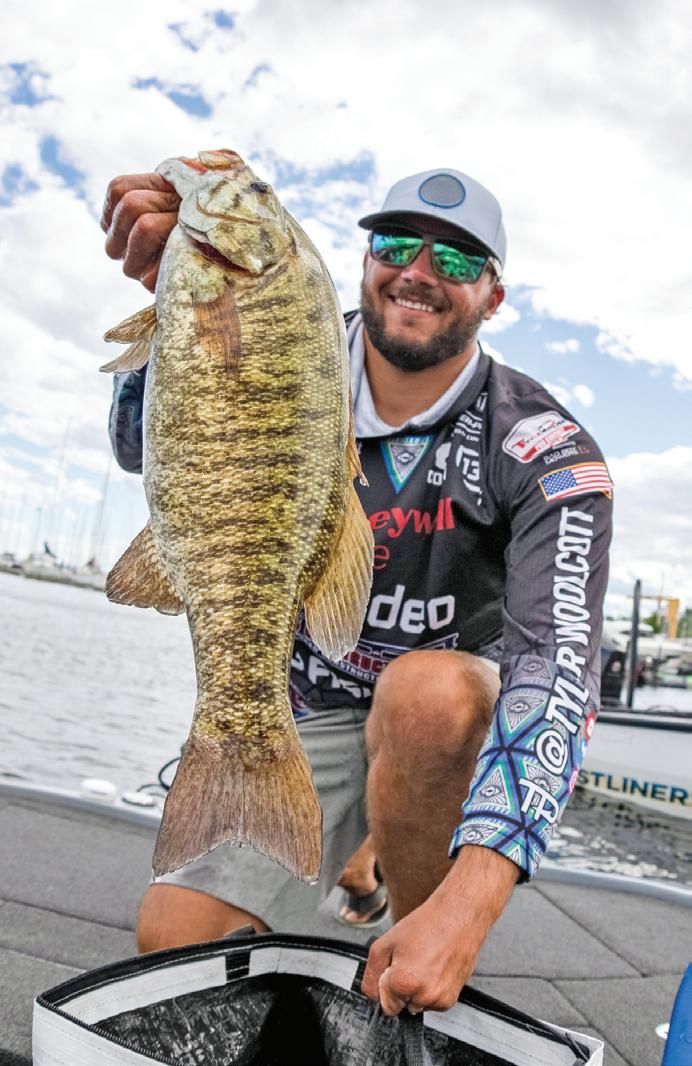

conservation policies, the sacrifices made have finally paid off. With striped bass everywhere it was a fishing bonanza. Now Florida and its surrounding states need to make the same investment in the mahi fishery and do the right things to restrict overharvesting.


The fall run typically starts in September and can last thru December with the larger fish moving thru late in the season. The interesting thing is the northeast striper migration is very similar to our mullet run here in Florida. It is precipitated by cooling water temps and an abundance of bait moving down the coastline hotly pursued by gamefish. I only had one day available to get on the water and prefer to do this type of in-close fishing from a kayak. I arranged to borrow one from my good friend Victor Nigro and set the day in motion. First stop was Blackhall Outfitters in Westbrook Connecticut to pick up some gear and a dozen eels for the day. The owner, Gene Chmiel was both a friendly and knowledgeable resource providing all the right information and supplies for a successful day. He also owns and operates an Airbnb for lodging as well as providing kayak rentals and direct water access to the fabled Connecticut River. Yankee Magazine has voted them twice, “Best of New England” and it’s a perfect launching pad for one of the most incredible seasonal fisheries.
I
f you live in Florida, there is a good chance you are from somewhere else, and more than likely the northeast. In fact, Florida has the secondlowest rate of population made up by native-born residents in the entire nation. Even though Florida is our chosen place to live we are all somewhat displaced. So, it was with great excitement when I realized my trip back to Connecticut for a family get together could accommodate a day on the water!
My favorite time of year to visit New England is the fall and not for the change of seasons but for the spectacular fishing and specifically the northeast striper run. Having just returned from the Connecticut shoreline I can tell you – this year’s migration was legendary! After years of sound
For this trip I was unable to book the Airbnb, so we stayed at the fabulous Water’s Edge Resort and Spa in Westbrook. With its spectacular views, direct water access, and the best Sunday brunch in town, it was an easy choice travelling with a spouse.
October is my favorite month for targeting migrating stripers. The weather is still stable with plenty of warm days and the bass are midway thru their migration. This insures lots of action with school sized fish to twenty plus pounds, as well as some jumbos that may have arrived a bit early. These larger fish are typically in the thirty-pound rage but can easily top forty plus pounds. Hang on if you hook up with one of these gals in a

Happy Holidays Anglers! During December we will continue to have cooling air and sea temperatures, providing a much needed break from the heat and causing the offshore bite to fire up. Sailfish season will continue to provide anglers plenty of tail walking, drag screaming action. The sailfish use cold fronts to aid their southerly migration, and their numbers will continue to grow this month as they migrate through our waters. This is the time of the year when anglers from all around the world come to “Sailfish Alley” aka South Florida to target sailfish! If you are looking to catch a sailfish, it is important to pay attention to the wind direction and the barometric pressure. Many anglers believe northerly winds get the sailfish feeding but it is also due to high pressure. The offshore bite will be red-hot with stable high pressure conditions. After a couple of days of consistent pressure, you have a good chance of catching this “bucket list” fish so plan accordingly! The bite also turns on before approaching cold fronts and rain, so keep this in mind when planning a fishing trip this month. Last month, we hooked quite a few sailfish slow
trolling blue runners.
Mahi mahi will also be migrating south from the northern states with the help of cold fronts. The mahi mahi should range from 6-30lbs, with larger fish not uncommon. Blackfin tuna, in the football size range will start to show up as well. Trolling feathers and squid pups between 200-400ft will be your best bet to catch some fresh sushi! The bottom bite should also produce great table fare. During the month

mutton snapper, yellowtail snapper, and trigger fish will be the best species to target on the reefs and bottom structures. Live bait or dead sardines will be the bait of choice. Remember, NE winds bring the bait and pelagics closer to shore. Bait will gather at the mouths of inlets and areas with a fast moving current.
Be safe during the holiday’s anglers and until next time, keep on catchin’!
1 Thu 3:12 2.1 3:38 2.3 9:34 0.3 10:11 0.2 6:49 5:28 2 Fri 4:23 2.2 4:37 2.2 10:37 0.3 11:07 0.1 6:50 5:28 3 Sat 5:27 2.3 5:32 2.2 11:38 0.4 6:51 5:29 4 Sun 6:22 2.4 6:22 2.2 12:00 0.0 12:36 0.4 6:52 5:29 5 Mon 7:12 2.5 7:09 2.2 12:50 0.0 1:29 0.3 6:52 5:29 6 Tue 7:57 2.6 7:52 2.2 1:36 -0.1 2:16 0.3 6:53 5:29 7 Wed 8:39 2.6 8:34 2.2 2:19 -0.1 2:59 0.3 6:54 5:29 8 Thu 9:19 2.6 9:14 2.1 2:59 -0.1 3:39 0.3 6:54 5:29 9 Fri 9:57 2.6 9:53 2.1 3:38 0.0 4:18 0.4 6:55 5:29 10 Sat 10:35 2.5 10:32 2.1 4:15 0.1 4:55 0.4 6:56 5:30 11 Sun 11:12 2.4 11:13 2.0 4:52 0.1 5:33 0.4 6:56 5:30 12 Mon 11:49 2.4 11:55 2.0 5:29 0.2 6:13 0.5 6:57 5:30 13 Tue 12:28 2.3 6:10 0.3 6:55 0.5 6:58 5:31 14 Wed 12:40 2.0 1:08 2.3 6:54 0.3 7:39 0.4 6:58 5:31 15 Thu 1:30 2.0 1:52 2.2 7:43 0.4 8:26 0.4 6:59 5:31 16 Fri 2:24 2.0 2:40 2.2 8:37 0.4 9:15 0.3 6:59 5:32 17 Sat 3:24 2.1 3:32 2.1 9:34 0.5 10:07 0.2 7:00 5:32





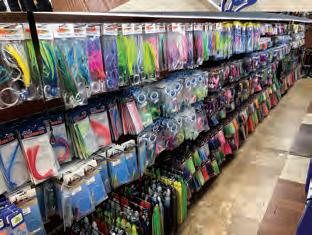



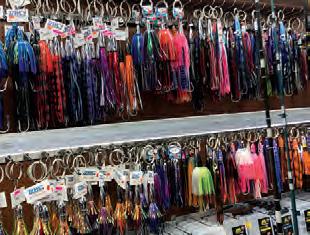




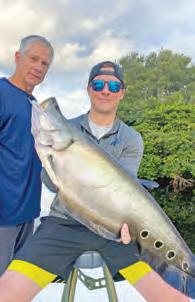
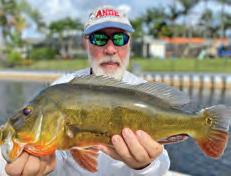


Hello, and here is your inshore and freshwater forecast for Palm Beach County. Lots of light tackle action will be easy to find this month. You can hit the inlets and jetties with poppers early in the morning, and most likely get into giant schools of medium sized jacks. If you drift those same inlets with white bucktail jigs or even a shrimp on a jig, you have the possibility of catching everything from sheepshead to African pompano. If you’re able to get out on the beach, a silver spoon is really all you need. Add a single J hook on the back to make releasing the fish (into the water or your cooler) a lot easier. On the beach, you will find bluefish, mackerel, pompano, ladyfish, and jacks.
 By Christopher Sprague
By Christopher Sprague
I hope you all have been catching fish! Lately, I have been really enjoying spearfishing and I have done many trips this month. I think spearfishing is fun mainly because you get a hands-on experience and for me, it is one of the most relaxing activities I do. My friends and I went out of Boynton and usually start our first dive at the step reef. It is an easy dive, only around 30 feet deep but usually holds a few groupers, snappers, and some yellow jacks. We threw the anchor and the second we hopped in hundreds of spadefish and trigger fish swarmed us. Suddenly, I saw a nice kingfish swim by. I couldn’t get close enough to get a shot at it, so I decided to just wait and hope it swam back. A couple minutes later another king swam by, this one a little smaller. I took a dive and aimed my gun and shot, then suddenly, my speargun reel was screaming! I worked the line till I could grab the fish and bring it to the boat. It wasn’t huge, about 10 pounds, but it was so much fun to fight. We then went out to a deeper spot, around 50 to 60 feet deep. The second we jumped in we had an unwelcoming surprise. We found ourselves swarmed by jellyfish, but luckily, we got out of the school and started diving. I saw a nice mutton but due to the depth difference from the last spot, my perception was off, and I couldn’t tell how far away it was. I lined up a shot only to find that my shaft didn’t even reach the fish. Although I was disappointed, it was a good learning experience and my friend ended up getting that mutton anyway. After that, the sharks started coming in and we decided to call it a day. We had an amazing dinner that included: mutton, grouper, yellow jack, and many more amazing fish. Overall, it was a blast, and we had such a fun time out on the water.
Back on the inside, flipping docks and deep channels with a light jig, tipped with shrimp normally produces some small snook and assorted snappers. Fly anglers will find action out on the beach and nearshore. If you have a good friend that you can talk into throwing a topwater such as a Zara Spook with no hooks on it, it’s a great time to tease the fish in so you can get better shots. As far as flies, it’s hard to beat a Clouser on an intermediate line, a small trace of number two wire is never a bad idea either.
In the freshwater on the Lake Ida Chain, you almost can’t miss at this time of the year. The fish will be schooled up together; largemouth, peacocks, and hybrids. They will be hanging out together feeding. Catching 40 or more in a morning is not unusual at all. As always, live shad is going to be the star, but we have had a lot of luck lately on topwater prop baits and deep diving crank baits.
Good luck out there!


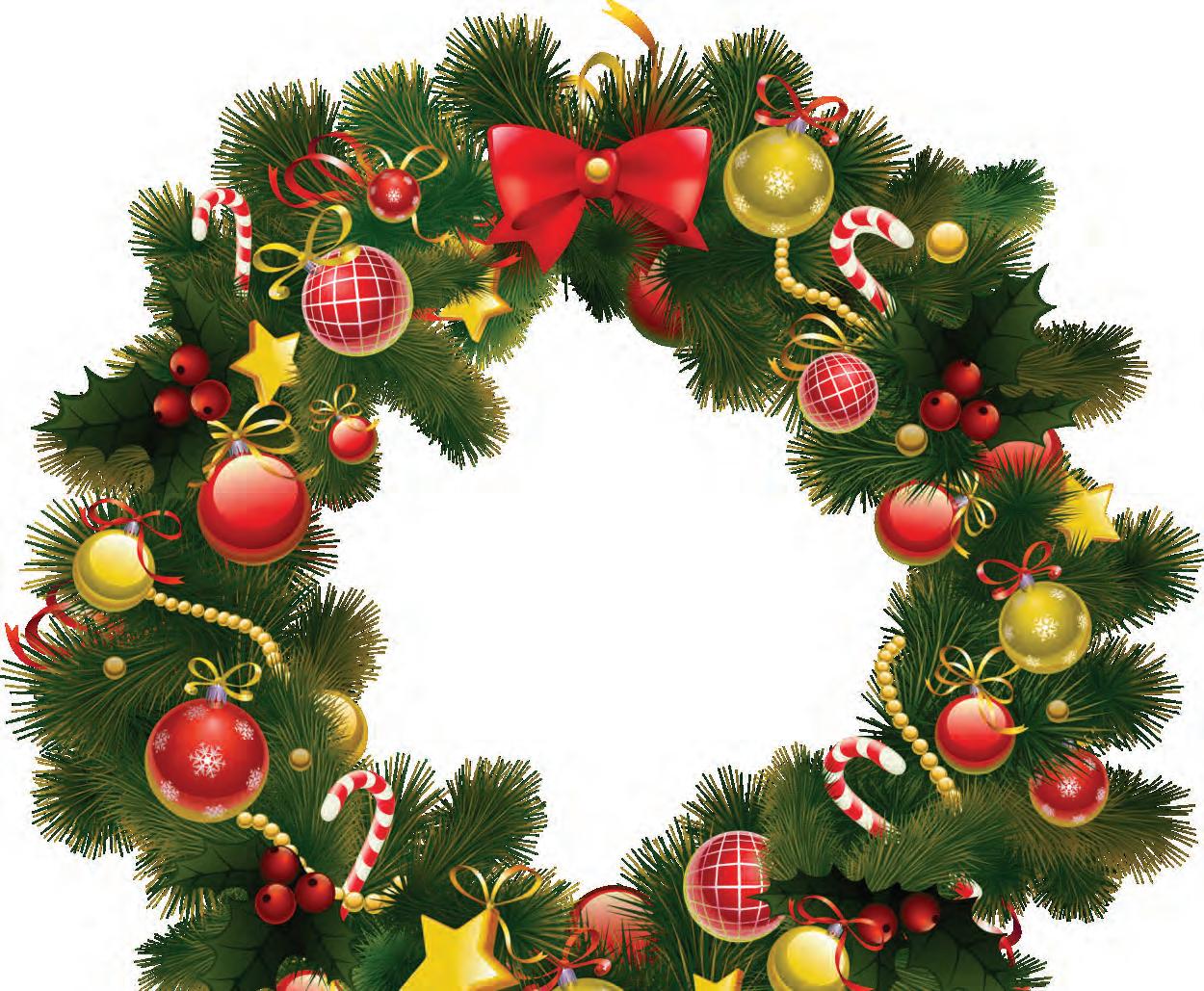

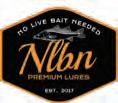











kayak. A legendary “Nantucket sleigh ride” is in store! I practice catch and release for these larger fish as they are prolific spawners and the future of the fishery. Make sure to check on local and state regulations for gear used and licensing.


The thing I love about this fishery is not much in the way of specialized gear is needed to get on and land a trophy fish which makes for an easy “pack and travel” when your primary visit is not fishing. Here’s a list of some of the basics I bring.
Warm clothes and arranged in layers. Don’t forget a wool cap and fishing gloves in case the weather turns cooler. I bring a Go-Pro style camera and selfie stick to capture the action!
All my reels for this type of fishing are spinning with the bait runner option. I use a bait runner reel with at least 20lb of drag setting like the Shimano Thunnus 6000 matched with a 7’ 4-piece travel rod in medium heavy action.
I use fifty-pound braid backing such as PowerPro with a top shot of fifty yards of forty-pound Momoi’s Hi-Catch Monofilament. I then use a barrel swivel like SPRO small enough to easily pass thru the guides and rated at 120lb test. This keeps the line from twisting and is critical to a successful trip preventing the notorious “eel spin”. Don’t go without it! To the swivel I attach a very short shock leader of fifty-pound Seaguar Fluorocarbon. This is usually only four feet.
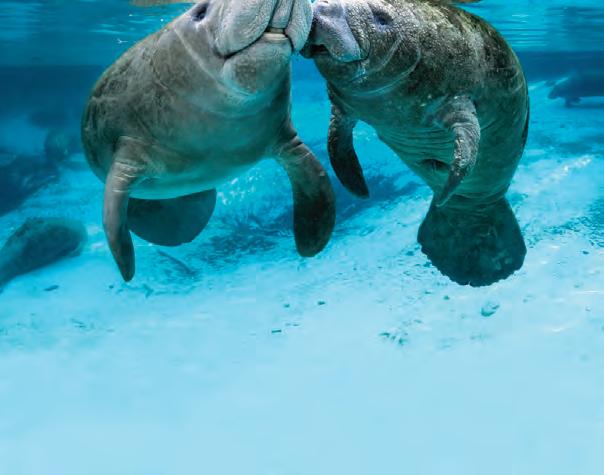

Size 4/0 circle hooks are used to accommodate local regs. Bring a pair of pliers that can cut mono / braid along with a BogaGrip for landing fish, grab some ice and a dozen eels in a soft cooler bag and you’re ready to go!
For almost all my big bass expeditions, my preferred bait of choice is live eel. When properly addressed they are easy to keep alive and handle. I keep them in a small cooler with a bag of ice placed on top of them. This settles them down and makes for easy handling with a cotton glove. They will perk up as soon as they hit the water. When the eel is picked up by a bass they will move away at considerable speed - count three seconds and engage the reel. Allow the line to come tight then set the hook by lifting the rod tip firmly – fish on!
New England weather can change in a heartbeat, but the prize is worth the effort.
With the right hook, and the rigging and trolling technique I get very few “spin ups” on the leader – a common complaint when fishing eels and why most don’t use these fantastic baits. Eels are like bass candy, and the big gals have a primal urge to kill, then eat them. This is rooted in the fact that eels follow the bass to spawning grounds and eat their eggs.
Gear





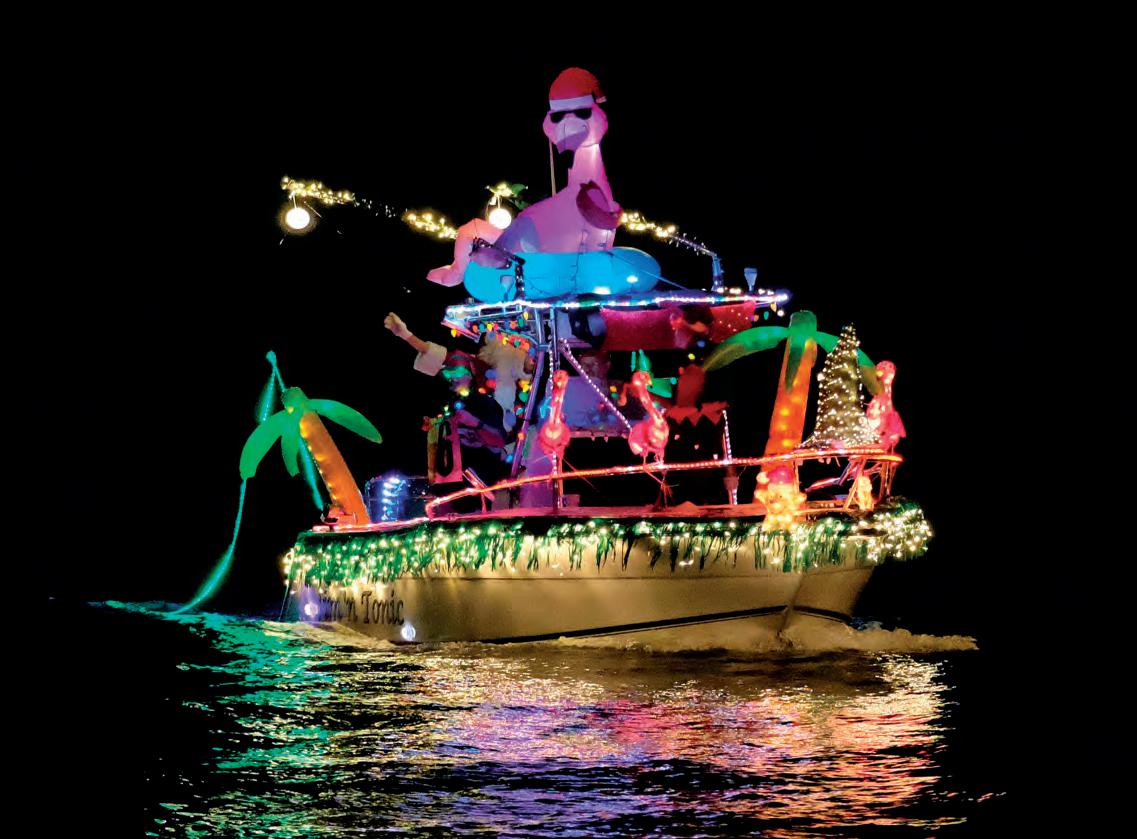











December is a busy month here at Aqua Adventure Tours! Things always ratchet up at the end- of-theyear with regular daytime charters, charters for boat parades, even nighttime Christmas light tours.
It’s fun but let’s face it - sometimes what should be a beautiful wind-down to the year can turn even the most easy-going of us into three-headed stress goblins!
It’s easy to over-schedule holiday get togethers, school, club, church and other community events. Many of us travel out-of-town to see loved ones, while others will host out-of-towners here for some fun in the sun. And a few of us gluttons for punishment do both!
For me, getting outdoors really helps ease that stress. And while I’m always happy to set up a private charter and help folks explore Palm Beach and South Florida by water, not everybody is into chartering, or even boats and boating for that matter.

If you’re among that group but you still love spending time outdoors, you’re in luck! Palm Beach County has a huge variety of parks, preserves,


nature centers, and natural areas. Some are more crowded, some less crowded, and some are virtually undiscovered. With gorgeous weather this time of year, it’s tempting to turn a few minutes outdoors into a whole lot more!
If you’re looking for solitude, try an early morning beach walk on a calm day and let the waves lap at your feet. Download the e-bird or Merlin app before you go and see how many shorebirds you can ID along the way. Or just watch them scamper in the surf while you stroll.

Take a late afternoon hike on the boardwalks at Grassy Waters Preserve and enjoy the soft light filtering through cypress trees. The entire park is accessible for wheelchairs, walkers, and scooters, and even has rocking chairs, making it easy to relax in the midst of nature.

Pick your own favorite spot for a sunset - Juno Dunes, Jupiter Ridge, or Pine Glades Natural Areas in north county; or Pondhawk, Green Cay, or Wakodahatchee Wetlands in south county. Be sure to check park hours - no sense getting locked in for the night!
If coastal areas are more your thing, check out Boynton Beach Inlet Park. With patience, it’s not hard to spot giant manta rays cruising through the inlet around high tide. Or head up to Dubois Park at Jupiter Inlet, grab a picnic table and look for manatees along the inshore shorelines. If you want a more certain chance of seeing wild manatees, visit Manatee Lagoon in West Palm Beach.
Taking a sanity break outdoors doesn’t have to be a huge undertaking and it doesn’t have to cost anything at all. If you’re looking for some selfguided exploring this month, Google “Palm Beach County Natural Areas Map”, pick a spot, and go!
Hope to see you outdoors!























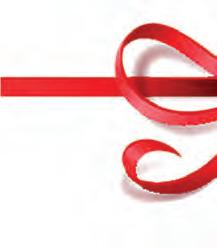
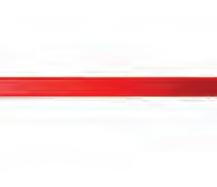




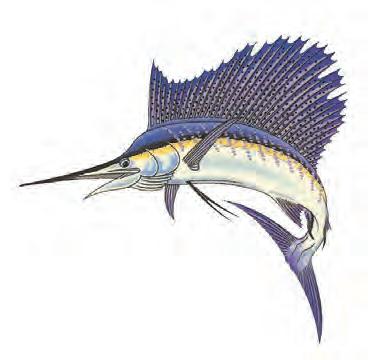






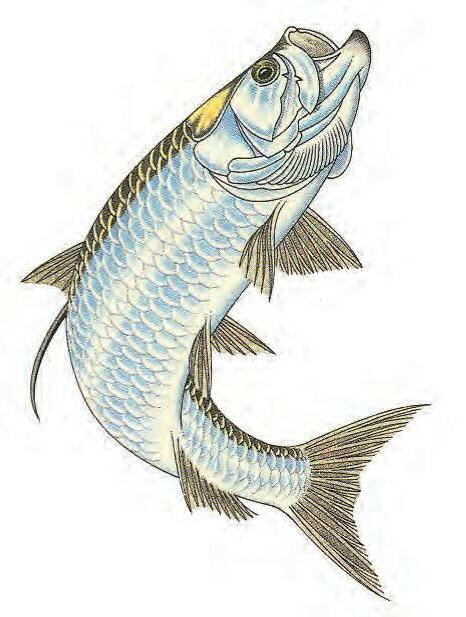


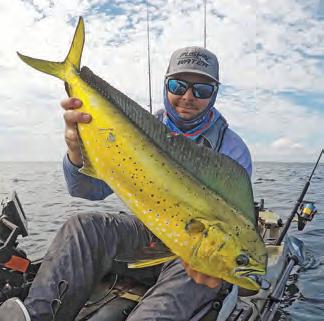
Cooler temps and cold fronts are a thing to look forward to this month. With the cooler water temps, we will start seeing our winter species coming through. Pompano are a favorite of mine as they are a great fight on light tackle and even better table fare. Look to fish along channel edges near an inlet of your choice. I like using a D.O.A. Shrimp Lure or a Goofy Jig. Pompano will be your target, but bluefish, ladyfish, jacks, and sheepshead will also keep the rod bent.
Finding good weather days will be the challenge in December. When you do get
LaVar Veale, from Texas, caught this monster 8-pound 8-ounce bass, which was caught and released as well as registered on trophycatchflorida.com!

The lake level is hovering around the 16-foot mark after having two hurricanes make landfall in the last 60 days, which is quite a bit higher than this time last year. As we move deeper into fall, the shorter light hours and cooler daytime temperatures help the water to cool. Water temperatures are 73 to 75 degrees at the present time which leads to longer activity periods for the bass. Every year at this time, the very largest bass that swim in Okeechobee start to move toward the spawning areas in the lake where they will feed heavily and then eventually spawn.
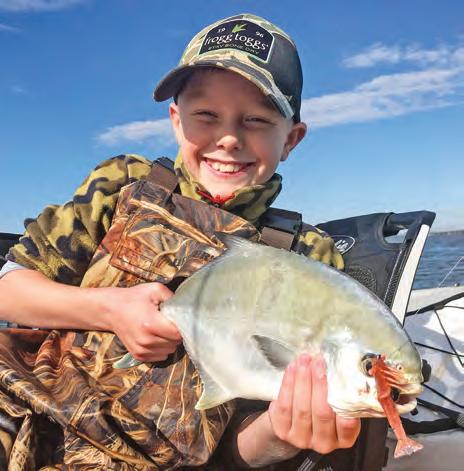
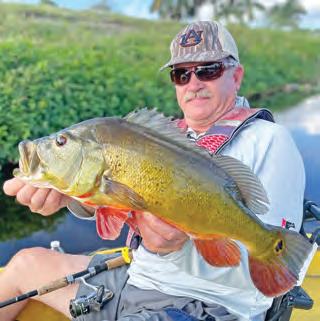
The Okeechobee strain of Florida largemouth is unique. Whereas female northern bass will all spawn within a month or so of each other, the Okeechobee bass spawn will start as early as the full moon of November and waves of female bass will continue to move in and spawn throughout the fall, winter and spring. It’s easy to see why the Big “O” is such a fish factory.
Spec anglers are starting to catch good numbers of small specks that are under the 10-inch size limit
place on the lake several years ago. The Kissimmee River is normally the first spot where limits of large specks appear, aside from the mouth of the river, the area north on the river around the weir is a developing hotspot, as is the lock and dam area above it. Jigs and minnows are the primary baits for snagging the tasty panfish, a minnow many times will outperform a jig numbers-wise, but a jig will often provide bites from the larger specks.
Artificial baits are still viable for catching good numbers of bass on the lake, top water plugs, spinner baits, Senkos and jigs will all work; however, there is no other bait that will match or outperform a wild golden shiner. Day in and day out live shiners will account for larger numbers of bites from largemouth, as well as they entice the big bites from the largest bass. Good catch rates are being reported by guides with 35 to 50 fish per trip. Big bass are showing up with frequency, bass in the 7-to-9-pound range are an everyday occurrence. Whatever species you pursue, the possibilities are great, if you spend your time using the proper techniques in the correct areas.
out, look to find a good sailfish bite along with kingfish and some mahi. Live goggle eyes slow trolled in 70-180 feet of water will be your range all along Martin, Palm Beach, and Broward counties. Find flying fish and you should find the sailfish.
December is typically one of the best months for peacock bass. Usually, this time of year they will pile up on concrete structure. Live shiners will be best and will get you chances at clown knifefish, bass, and crappie.
9:05 2.8 9:05 2.6 2:21 0.0 2:49 0.6 6:56 5:28
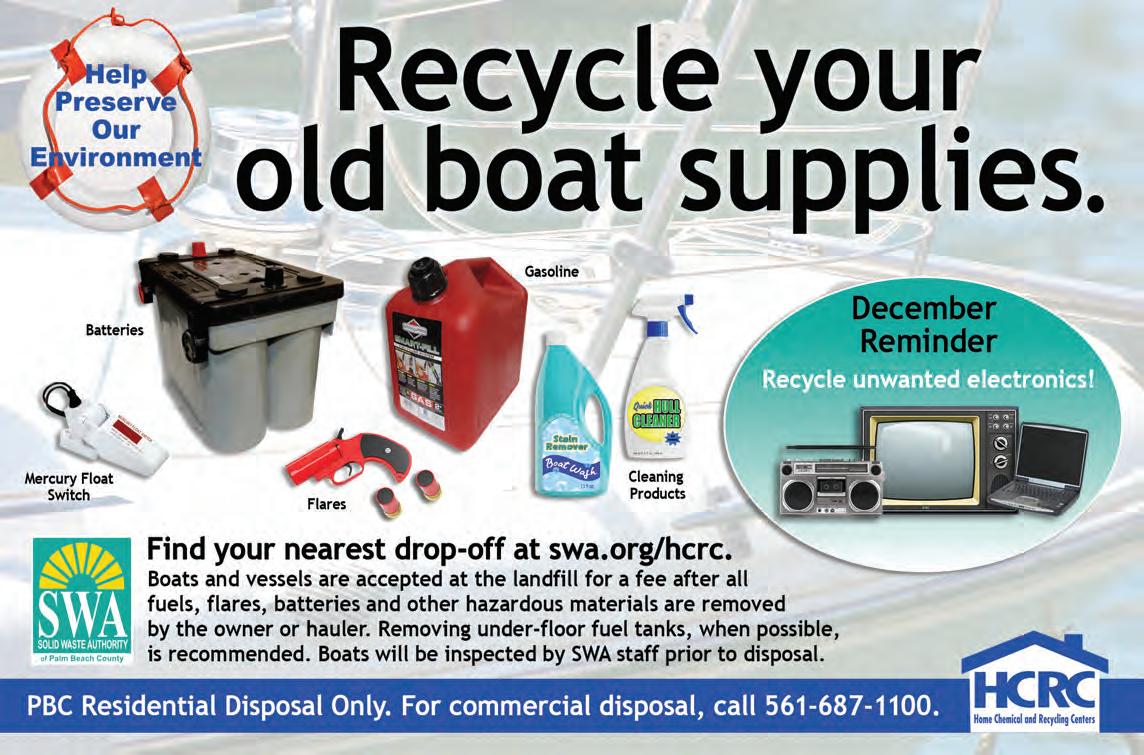
9:43 2.8 9:44 2.5 2:59 0.1 3:28 0.7 6:57 5:28
10:22 2.7 10:24 2.4 3:38 0.2 4:08 0.8 6:58 5:29
11:01 2.6 11:07 2.3 4:17 0.4 4:49 0.8 6:58 5:29
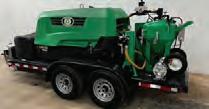





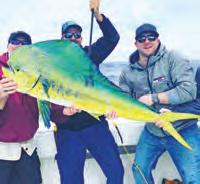
elcome to the Palm Beach fishing report for December. Schools of baitfish will be moving south away from the cold front. Big fish eat little fish, so with all the bait swimming down, always expect hungry pelagic fish like big dolphin and smoker kings behind them.




The waters from Mar-a-Largo to north to the Juno Pier, will be as far as you will need to go this time of year. Lots of pro’s head south out of the Palm Beach Inlet, letting the warm waters of the “Gulf Stream” take them north. This is natures fish freeway. It’s also a great way to cover water and save on fuel cost. Try fishing in depths of 170’ to 80’ of water, also keeping that VHF on channel 19. If you hear that the bite is deeper or shallower, adjust your depth. Live bait is the key! So don’t forget to order your google eyes the night before. It can be very hard and take a lot of time to catch your own bait in December. Just buy them (bait guys on VHF channel 68), it’s good for the economy and your fuel bill. Once you have your bait you can fish a couple different ways. I prefer kite fishing myself, but slow trolling live bait works great too. The key is to cover water. The choice is yours.
For the inshore anglers, large schools of jacks, Spanish macks, and tarpon will be crashing any live bait they can find. Live shrimp or finger mullet will be the best. If you’re a caster, try a small spoon with a fast retrieval to stimulate the bite. Remember, fish want to chase their food. Kind of like a cat, go figure. Good luck and tight lines!
Happy Holidays and Merry Christmas to all! December can be a fun month as cool fronts migrate through the local area. With a wide variety of species to target, December offers plenty of rod bending action.
Snook season closes December 15th, but that does not mean anglers cannot target them. Sea walls, docks, and bridges are great areas to target snook. Live shrimp and D.O.A. 3” Shrimp are excellent baits to get the strike. Mangrove shorelines will offer shots at catching all four species of snook.

Tarpon fishing will be excellent along mangrove shorelines and channel edges. Live baits and D.O.A. TerrorEyz will get the drag screaming. Outgoing tide and first of incoming tide will be great times to target the silver king. Average size of the tarpon is 5 to 60 pounds.

Deep holes, channel edges, and flats should be great areas to locate a plethora of species like jacks, mackerel, pompano, snook, snapper, bluefish, and many other species. D.O.A. C.A.L. Curl Tails and live baits will get the drag screaming.

Well, that is the fishing report for the Palm Beach
Remember you can’t catch them from the couch, so get out there and get hooked up. Tight Lines!
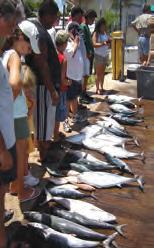
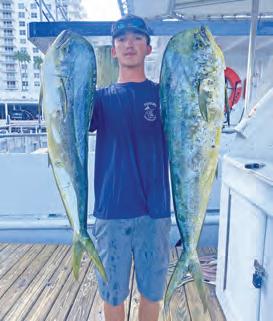




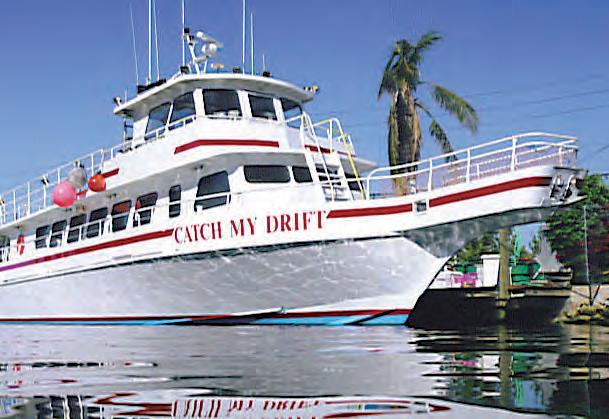

New Lattitude Sportfishing • (954) 707-2147 • www.NewLattitude.com


December is one of my favorite months to fish in Fort Lauderdale. There are 2 main attractions this month: sailfish and dolphin. Every year, from December through February, sailfish make a massive push through our waters. Sailfish can be caught here in Fort Lauderdale any time of the year, but only during these 3 months do we have such a high concentration of them. The best sailfishing days are during a cold front. I really don’t know why sailfish bite so well during a cold spell, but the fact remains, a cold snap means the sailfish snap. It never gets really cold in Fort Lauderdale. When I say a cold front, we’re still talking 50-65 degrees, but it gets the sailfish turned on. On many fishing days this season, catching 1 or even 2 sailfish is a good trip, but on these chilly days, we can put awesome numbers of sailfish on the board, at times even 6-10+ sailfish on a trip. The best technique for sailfishing is kite fishing, where we use high flying kites to present the baits, keeping these baits suspended and splashing on the top of the water. We love kite fishing because when the sailfish comes up, you get to see the whole bite sequence on the top of the water as the sailfish chases the baitfish. It’s awesome to watch! Sailfish are all catch and release, but at 7 feet in length and being such a gorgeous gamefish, they make for great photos and awesome replica trophies for your home or office wall.
Dolphin are the other main attraction in December for the sportfishing boats in Fort Lauderdale. This is a great month to go offshore and hunt these light tackle gamefish. The Gulfstream waters, 2-20 miles offshore, are laden with small to gaffer sized dolphin fish. I love to go offshore on an all-day trip, put out the lures, and go trolling for dolphin. You might have to spend a good deal of time trolling offshore to actually find some fish. Dolphins like to hang out near seaweed, weed lines, or floating debris. Birds are also great for helping us find dolphin. When you finally locate a school of dolphin though, the action is on! A school will stay right with the boat, and you can sometimes load your whole box off just one school of fish. They are great eating and freeze well! If you find a school near to a floating board or other debris, always try a deeper bait with wire leader for a wahoo. There are some big wahoo out there this time of year as well. Whatever you fish for, you can’t go wrong fishing this month. It’s fishy here in December. Tight lines everyone.
comfortable weather. push into back bays, action along seawalls, another option for Shrimp presented lights with a D.O.A.
excellent shing for the docks, and deep mullet, pin sh, plenty of shots on alewife with a jig head.
ways. Jacks will docks, or open Battling jacks on light the tussle yourself. hope you all
Captain Craig Korczynski phlatsinshorefishing.com Instagram, Twitter & YouTube
Charles with a tarpon.
To some hunters out there, their choice of a big game cartridge can depend on the state they are hunting in and the guidelines they have set. With the term “big game”, we are really talking about deer. In some states the choice for a hunter is only a shotgun. Many hunters used to look down on this, but in the last decade or so, going to the woods every fall to hunt North America’s favorite big game animal a shotgun, commonly known as slug gun, is not something that is a bad thing any longer.


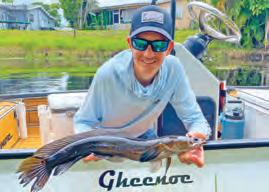

South
• sflfishingcharters.com

The slug and slug gun has made huge advancement with technology and ran with it. The industry has turned the slug gun, aka shotgun, into a tool which now has rifle like accuracy to 125 yards and beyond. The main key to the slug gun is the rifled barrel that they use. A common shotgun has a smooth barrel for use with shot making slugs, which will be used for deer hunting. It is only accurate out for 75 to 100 yards. These slugs are known as rifled slugs to help put some spin on the slug when it leaves the barrel. When you put a rifled barrel on a shotgun, elevating it to the “slug gun”, it changes drastically.
Tom with a big jack.
Of course, with the change in the barrel you now can change the slug. Technology has brought the slug to a whole new level. Now we have slugs that are known as sabot slugs that use the rifled barrel to its fullest. The slug is now much more aerodynamic and is put into a casing which helps with that spin. You now have something with the accuracy of a rifle with distances not imaginable back in the day of regular slugs.
With the advancement of the shotgun, aka slug gun in the deer woods, along with the new ammunition available, states like Ohio, New York, Illinois, and other restricted regions, grabbing that slug gun is no longer a hindrance, but a very versatile tool to have in your collection.
What a year it has been! I would like to wish everyone a happy and healthy holiday season and a prosperous new year. Now let’s jump into the fishing report. Bass fishing has been phenomenal as the water temperatures make their way into the low 70s. I have been finding large numbers of largemouth bass using my arsenal of jerk baits, twitch baits, topwater, and Ned rigs. For those of you who follow this report, you know I love Ned rig fishing. My Ned setup is a 1/8-1/4oz BKK Ned Head with a Z-Man Tiny TicklerZ. Sometimes that smaller Ned profile will make the difference in getting a bite vs. not getting a bite. The peacock bite has been really good also as they are bulking up for their winter season. Peacocks are being caught mainly on live bait and jerk baits. The Yo-Zuri 3D Minnow remains as my favorite lure in my tackle box for peacock and largemouth bass. I catch the majority of my peacock bass next to shallow flowing water or deep non-moving water. Any culverts or spillways moving a small to moderate amount of water will usually hold fish. If I don’t find any moving water, I’ll look for deeper structure to fish this time of the year and switch to live bait.
After last month’s big storm brought a lot of rain, the water levels in the Everglades are still very high, which is abnormal for this time of year. Therefore, I have resorted to urban fisheries like Lake Ida and the C14 canal system. They both hold large numbers of fish and are a sure-fire destination to have some fun! When fishing in these urban waters, you can find a wider variety of exotics such as the bullseye snakehead and the clown knife. Both are difficult to catch species, but they are hard-fighting, adrenaline-raising fish. They require some patience, but snakeheads are most commonly caught on topwater, and clown knifes are typically caught by soaking baits on the bottom.
The bullseye snakehead is notorious for its topwater frog attraction with massive blowups. These invasive fish will also eat spinner baits and the smaller ones will eat a crappie jig with a beetle spin. For crappie jigs, check out JYG Pro Fishing. I helped design these crappie jigs with a 2x strong hook and they come in a variety of great colors. For the big snakes I recommend American Snakehead Customs Frog King. Snakeheads have some pretty brutal teeth, but these lures are built to last even after catching several large snakes.
Once the water temperatures drop, catching clown knifefish is as simple as soaking a live shiner on the bottom with a small split shot weight. Similar to tarpon, these fish are air breathers, and you can catch them rolling in the middle of deeper water. Let those baits soak until you get a bite!
Port Everglades, ICWW, FL - Dec 2022 Date High Low AM ft PM ft AM ft PM ft Rise Set Moon 1 Thu 2:19 2.7 2:45 2.8 8:25 0.4 8:59 0.3 6:49 5:29 2 Fri 3:31 2.8 3:47 2.7 9:32 0.5 9:57 0.2 6:50 5:29 3 Sat 4:32 2.8 4:41 2.7 10:33 0.5 10:50 0.1 6:50 5:29 4 Sun 5:25 2.9 5:31 2.7 11:28 0.5 11:38 0.1 6:51 5:29 5 Mon 6:14 3.0 6:17 2.7 12:18 0.4 6:52 5:29 6 Tue 6:59 3.0 7:02 2.6 12:23 0.0 1:03 0.4 6:53 5:30 7 Wed 7:41 3.0 7:43 2.6 1:06 0.0 1:44 0.4 6:53 5:30 8 Thu 8:20 3.0 8:23 2.6 1:45 0.0 2:22 0.4 6:54 5:30 9 Fri 8:58 2.9 9:01 2.5 2:23 0.0 2:59 0.4 6:55 5:30

5:19 3.0 5:26 2.9 11:28 0.5 11:45 0.0 6:51 5:29



6:08 3.1 6:12 2.9 12:15 0.5 6:52 5:29
6:53 3.1 6:55 2.8 12:29 -0.1 12:58 0.5 6:53 5:29
7:34 3.1 7:35 2.8 1:11 -0.1 1:39 0.5 6:53 5:29
8:13 3.0 8:13 2.7 1:51 -0.1 2:19 0.5 6:54 5:29
8:52 2.9 8:52 2.7 2:30 0.0 2:58 0.5 6:55 5:30
9:30 2.9 9:31 2.6 3:08 0.1 3:37 0.6 6:55 5:30
10:09 2.8 10:11 2.5 3:47 0.2 4:17 0.7 6:56 5:30
10:48 2.7 10:54 2.4 4:26 0.3 4:58 0.7 6:57 5:30

Tony
Kenan reeled in this nice mahi while aboard The Sea Mist out of Boynton Beach.
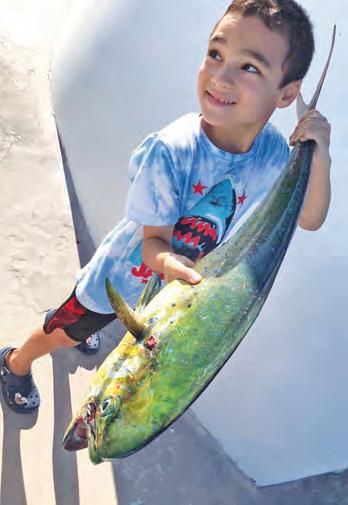
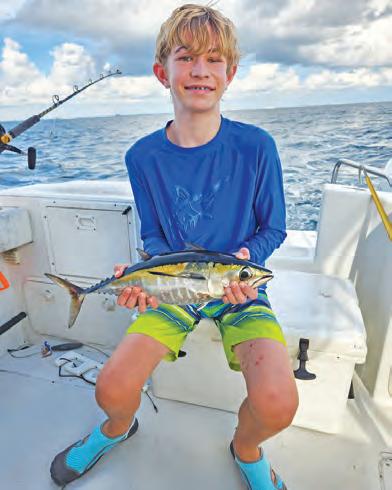
Electric Dave Lawrence caught and released this 6 1/2-pound peacock out on Lake Ida using a live shad.

Marc with his 1st tuna, caught while trolling offshore out of Jupiter.
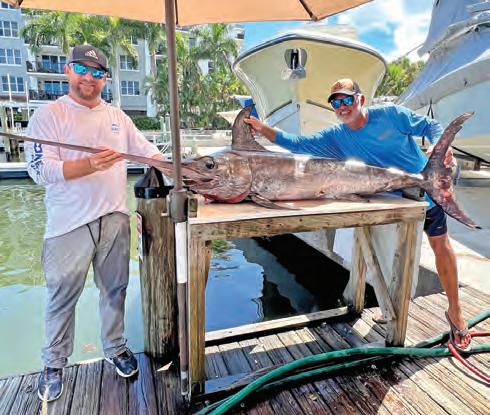
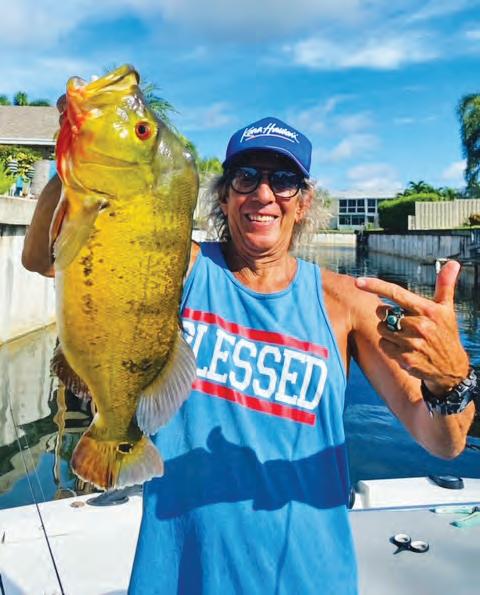
Kaiden Vaughn landed this 8-pound peacock bass.

bragging is good!
Send us your catch photos with details: Who, When, Where, With What, etc. to ilene@CoastalAnglerMagazine.com
Tamaccio, Fred David and Chef Lenny Strobel caught this beautiful, 125-pound swordfish! James caught and released his 1st tarpon on live bait in a Jupiter canal.


With recreational boating season coming to a close across much of the country, BoatUS compiled a list of the top-10 boat names ordered this season through its online boat graphics service. Here are the rankings.


1) Andiamo: Meaning “let’s go/we go /come on” in Italian, Andiamo remains in the No. 1 spot from last year’s list. It’s also a happy refrain heard from the person behind the helm as they put the throttle down and head to open waters.
2) Osprey: is year was the rst time Osprey has made the top10. In a unique twist, Osprey bumped last year’s No. 2 boat name, Social Distancing, completely o the list. ’Nu said, right?
3) Serenity: is No. 3 name is so popular it has made the top 10 seven times since 2010, tying the record with Second Wind. Yep, you guessed it – both are popular with sailboat owners.
4) Encore: Also a newcomer to the top-10 this year, Encore may be the boat name of choice for an entertainer. Or, it could indicate the “next” boat – either satisfying the three-foot-itis or scaling down, or maybe even coming back to boat owning a er a hiatus.
5) Zephyr: Last appearing on the top-10 in 2010, sailors will welcome this reference to a gentle breeze back to the list.
6) Second Wind: Is this boat named for a new chapter in life or achievement? A comeback? A new strength? We’ll never know for sure, but gosh is it perennially popular.

7) Adventure: A boat with this name is usually out of the slip every weekend putting miles of water under the keel.
8) Knot on Call: is boat name serves as a notice that on-the-water time can’t be tampered with. Of unique importance, the owner of this boat can silence their cellphone ring in just under two seconds.
9) Shenanigans: Quit fooling around. Shenanigans are a part of every boating culture.
10) Grace: In its fourth appearance on the top-10 boat names list since 2010, Grace likely holds deep meaning for vessels with beautiful lines or for those that navigate with nesse. is is the one boat in the marina that also makes docking look easy.
For a look at all of the BoatUS Top-10 Boat Names lists over the years, visit BoatUS.com/BoatNames.


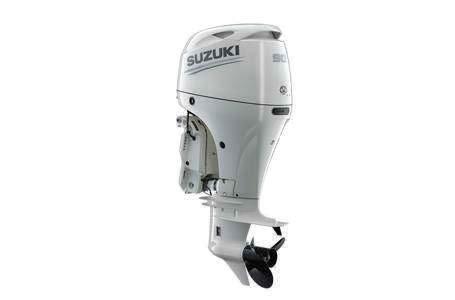

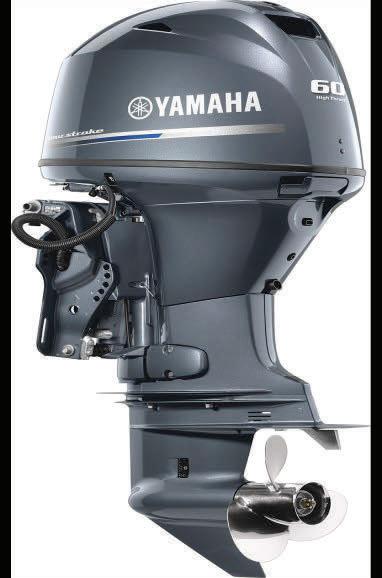

More o en than not, pan sh were the sh that introduced most anglers to the sport. e term “pan sh” is used to describe any of the commonly found species that usually never grow bigger than the size a frying pan. Most of them are legal to keep, regardless of size.
ese are species known as sun sh, bluegills, red eyes, rock bass, pumpkinseeds and countless other names, o en depending on the region. But this article is about a di erent kind of pan sh, and one that was naturally found only in other countries.
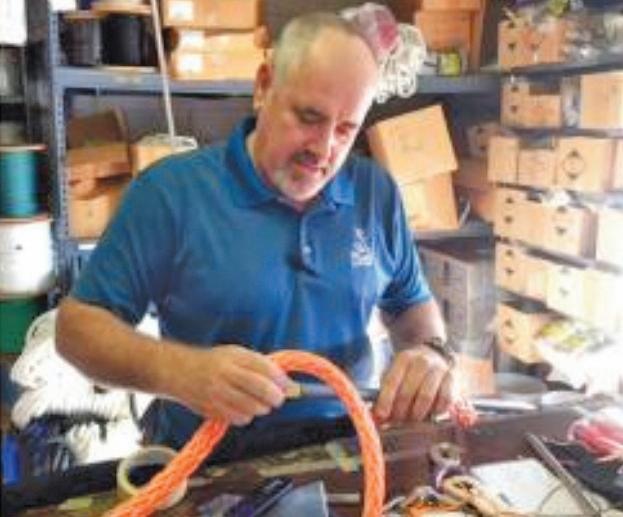
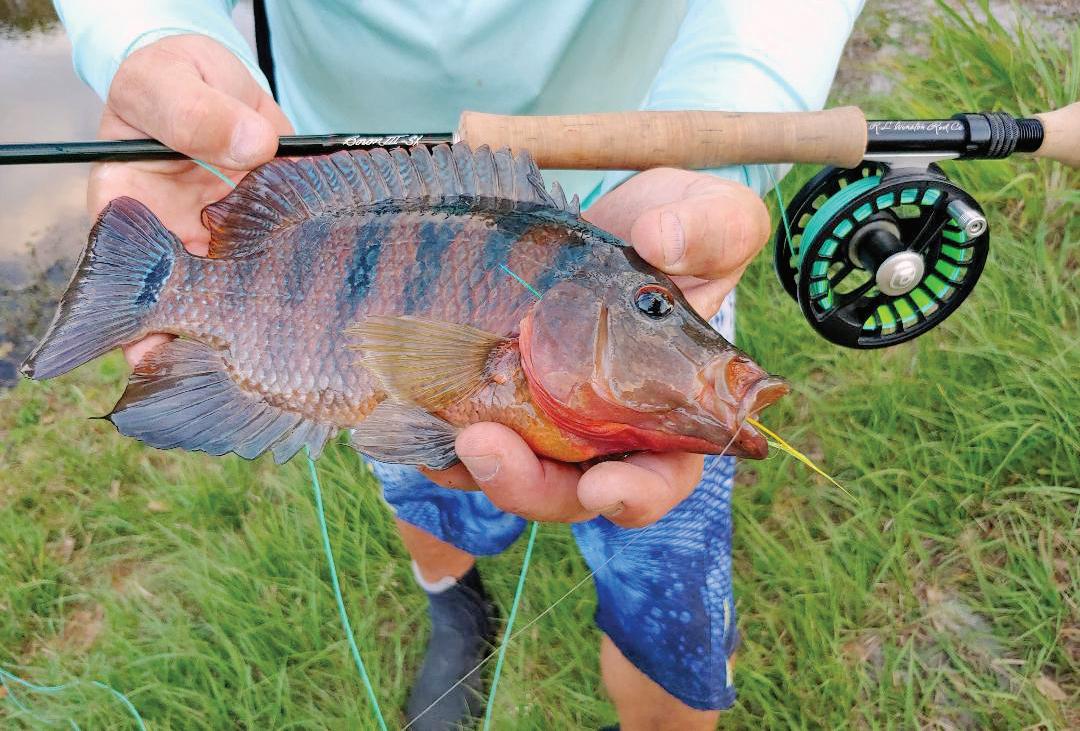
e Mayan cichlid is native to southeastern Mexico and the waters of Central America’s Honduras, Belize, Nicaragua and Guatemala. e rst reported non-indigenous population was recorded here in Florida Bay in 1983. Due to their adaptability and south Florida’s favorable climate and water conditions, they now can be found in great numbers from the canals in Miami to the Kissimmee Chain of Lakes, and almost all inland waters between.


Mayan cichlids are a freshwater species, but are known to thrive under a variety of environmental conditions, from a wide range of salinity to low oxygen conditions, and therefore can inhabit most waters in this region.
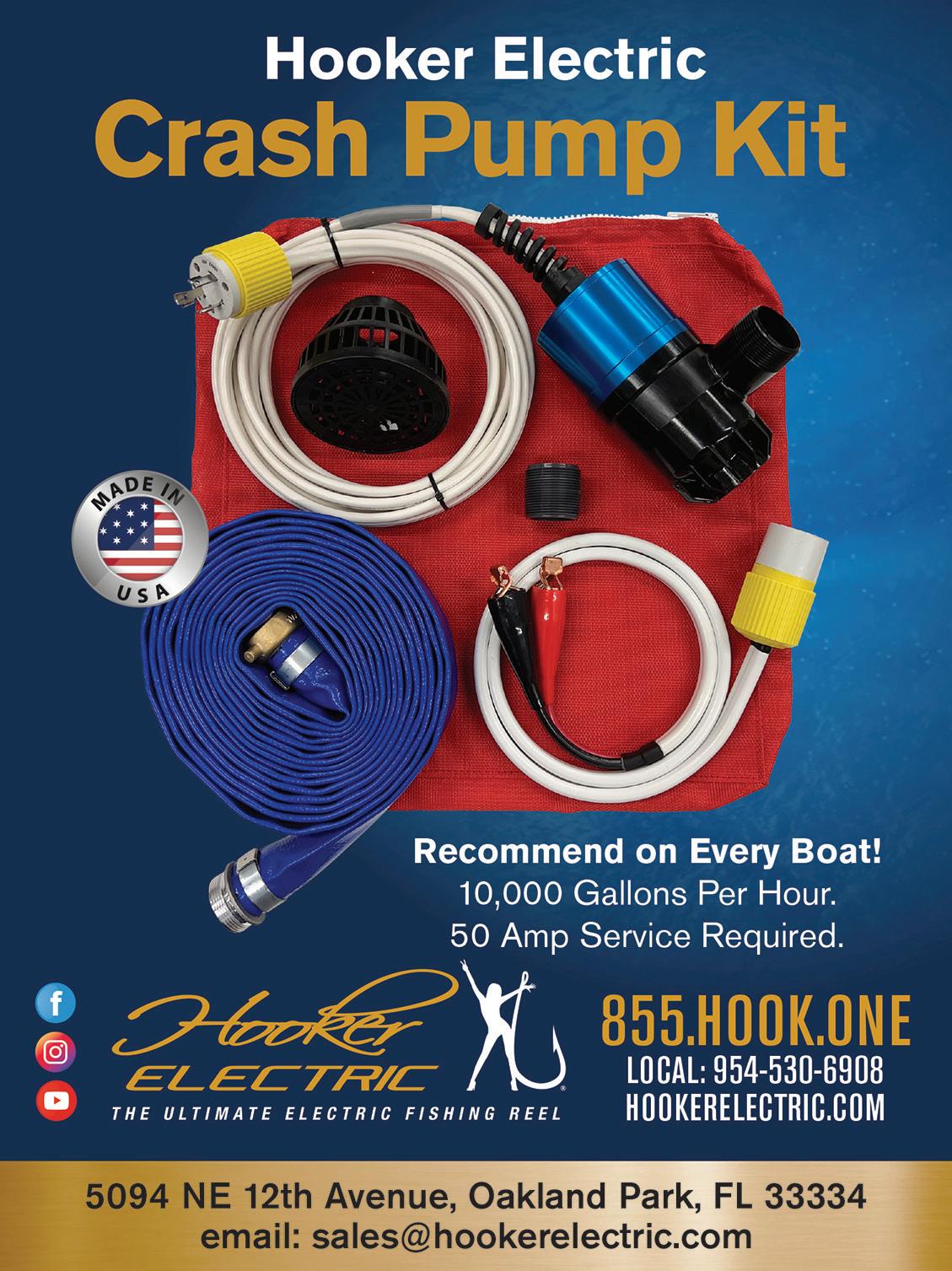

is oval-shaped sh has spiny anal and dorsal ns, and it ranges in color from olive green to a light brown, with darker vertical bars. During breeding season, their colors become vibrant, and their throats and n edges glow bright red to orange, which earned them the nickname “atomic sun sh” or “orange tiger.” Similar to their cousins the peacock bass and the oscar, they sport a black spot and ring on the tail to confuse predators. e Mayan’s spot is black with a turquoise ring.
Mayan cichlids are a very attractive sporting species that o ers strong ghts on light and y shing tackle. Mayans readily take a variety of natural baits as well as small arti cial lures and ies. e countless canals, lakes and neighborhood ponds of south Florida are full of these amazing little ghters and many other species. I am a y sherman, and Clouser’s Minnow or any small bait sh pattern, along with a Gurgler work well for this aggressive feeder.
I would recommend an out t in the 7/8 weight range, because cichlids share these waters with much larger species. It’s common to catch snook, juvenile tarpon, tilapia and largemouth bass in these locations.
Mayan cichlids are not considered invasive, although they are nonnative. ey have no season or bag limit, and harvest is encouraged. ey have white aky meat with a mild avor and are considered very good table fare.
I will not o er an opinion on just how this species found its way to this region, but I believe they’re here to stay. We might as well sh for them.
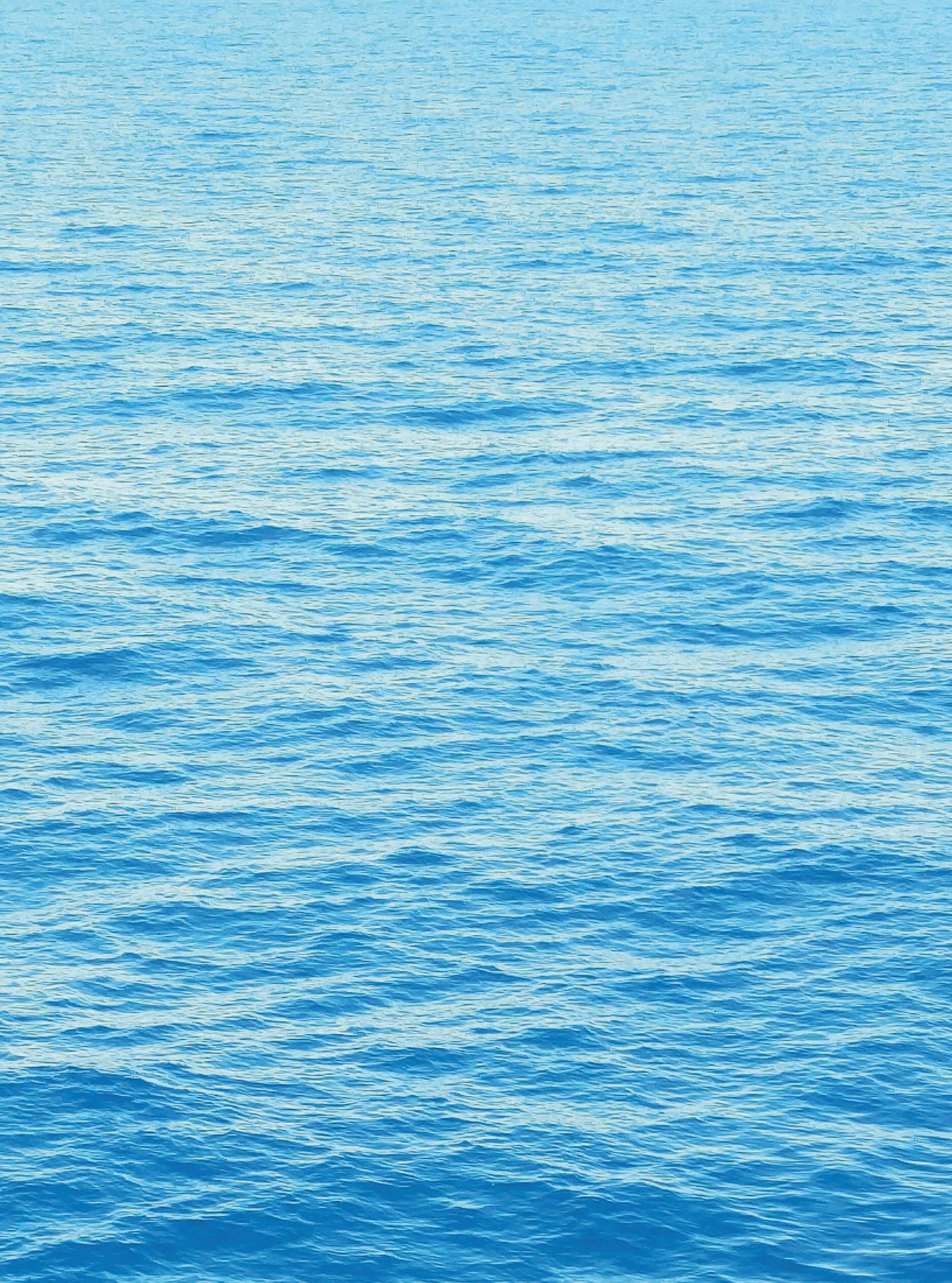
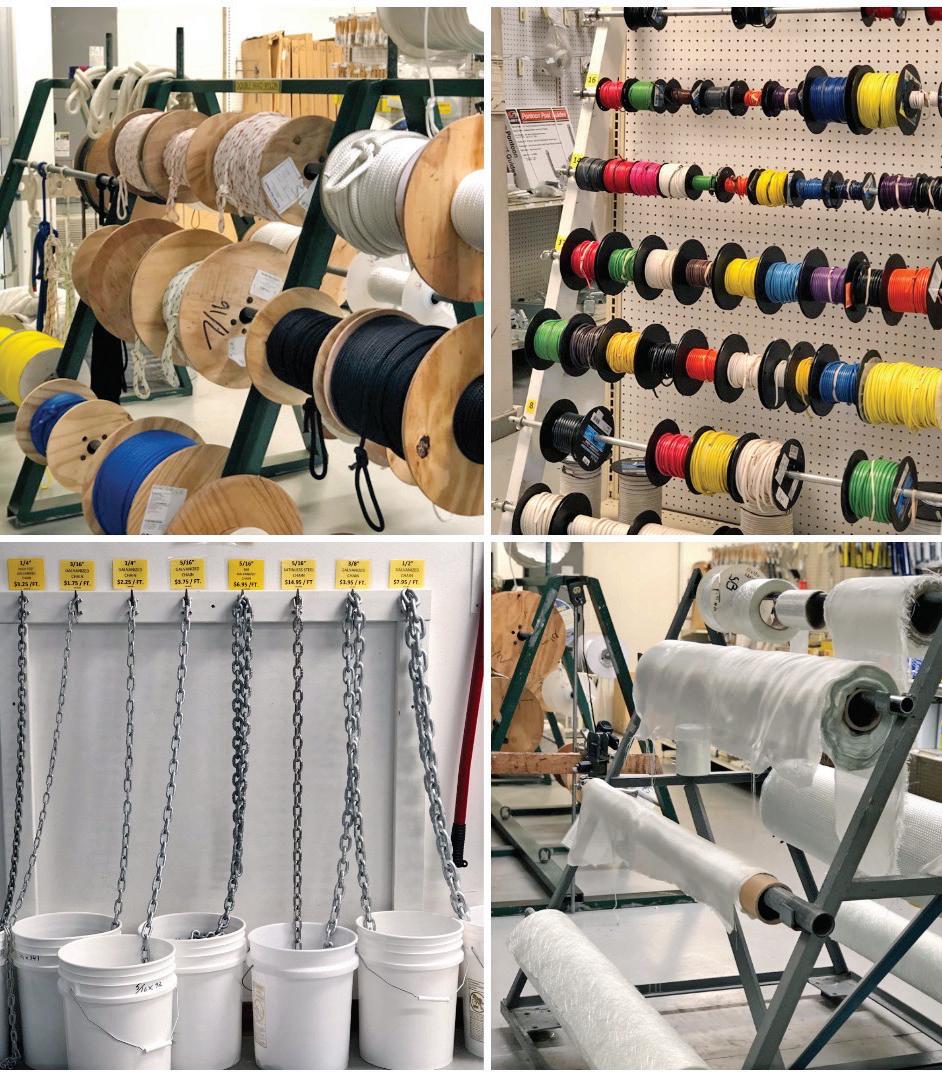
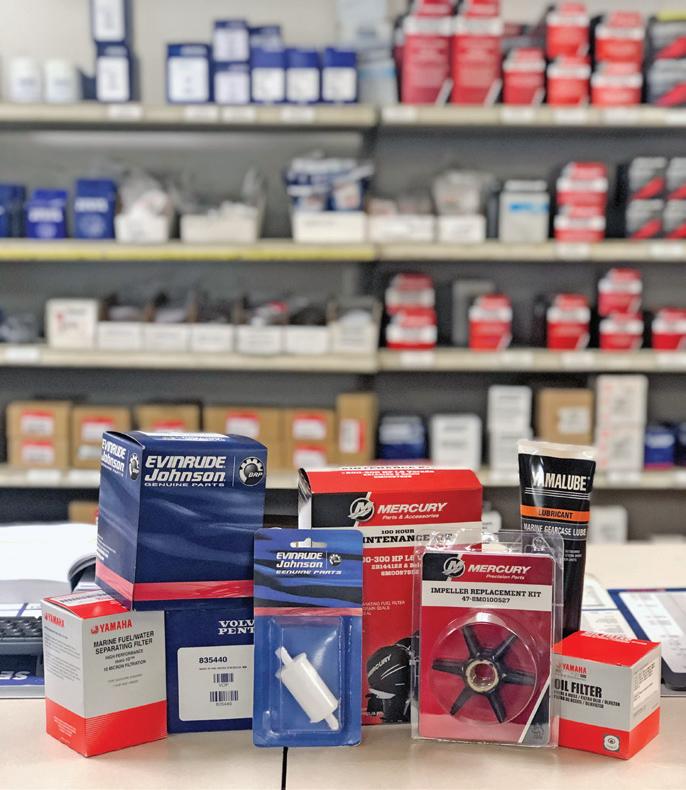













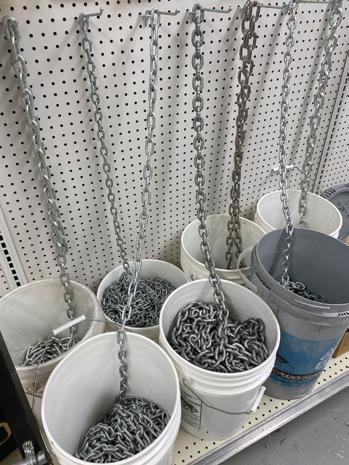

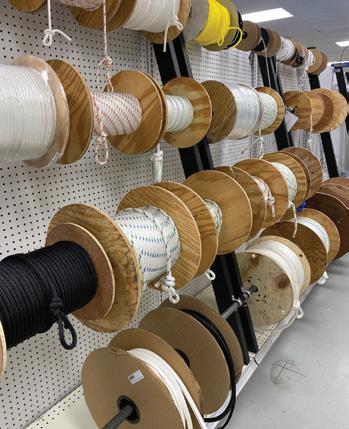
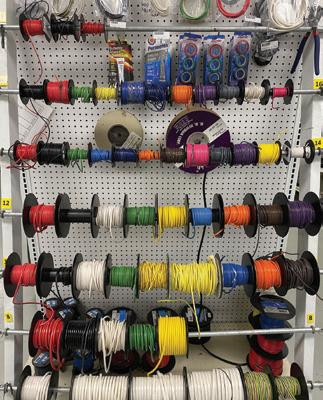
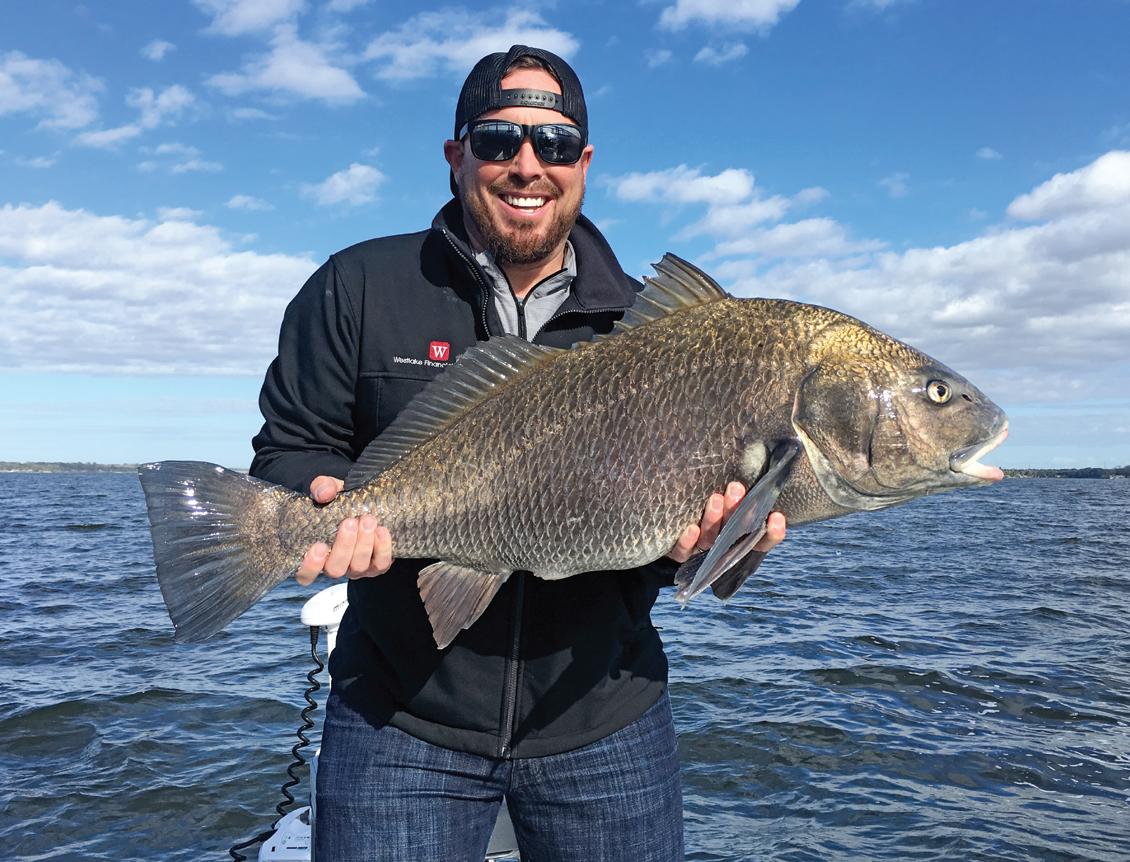

 By Emily Hanzlik
By Emily Hanzlik
With the mullet run over and the cold setting in, our target species begin to change. Most of the high-energy sh like jacks and tarpon slow down during winter. So we turn our attention to already slow bottom-feeding sh that aren’t as a ected by cooler water. Black drum are a highly praised bottom-feeder. Not only do they taste delicious, they grow to amazing trophy size.
Black drum are in the drum family with red sh, but they are di erent in appearance and their way of living. Black drum have a high arched back compared to most sh that levels out toward the tail. ese sh are a darkish gray or black with some tones of brown that fade to a lighter belly. Normally, juveniles have four to six vertical bars on their side, similar to sheepshead. e bars fade with age.
Black drum have barbels or whiskers on their lower jaw like cat sh. ese barbels are used to smell mollusks and other prey in the sand, which the drum digs out. ey then use rows of molar-like pharyngeal teeth to crush mussels, crabs and other hard-shelled creatures. ese teeth line the top and bottom of their mouths and can extend to the back of their throat.
Black drum live from Texas all the way up past New Jersey. ey congregate around structures like bridges and docks. However, they also can be found in bays, river mouths, oyster beds and along beaches. Juveniles are mostly found in estuaries.
As these sh begin to spawn in the colder months, they move toward owing inlets. Just like red drum, they participate in mass free-spawning, where they release sperm and eggs while grouped together in owing water. e pre-spawn move to the inlets gives anglers plenty of time to target them in groups.
Jalon Tomlinson enjoys targeting black drum during peak season. He said shing is best during cold fronts on an outgoing tide. He uses a chicken rig with a 3- to 4-ounce pyramid sinker or a Carolina rig with a 3-ounce egg sinker and a 2/0 hook. He recommends a 40-pound leader because powerful sh heavier than 30-pounds are a real possibility. Ideal baits are fresh dead shrimp or old stinky shrimp. However, Tomlinson has also caught them on crabs and sand eas.
Tomlinson catches some monster drum with this technique, but he prefers to keep the 14- to 28-inchers because they’re better to eat. In Florida, there is a daily bag limit of ve per harvester, with a slot size of 14 to 24 inches. One sh is allowed over the 24-inch slot.
e IGFA all-tackle world record black drum weighed an amazing 113 pounds, 1 ounce and was caught out of Lewes, Delaware.

Emily Rose Hanzlik holds 56 IGFA world records in various categories.
She hails from West Palm Beach, where she has a part time Bow n Guide Service as well as shing classes for Jr. Anglers.
Find her on Social Media @emilyhanzlikoutdoors.
Florida seasons for snook harvest close this month in state and federal waters of the Gulf of Mexico and the Atlantic.
e Gulf snook season closure date is Dec. 1, and snook harvest will remain closed through the end of February in Gulf state and adjacent federal waters. e Atlantic snook season is closed Dec. 15 through Jan. 31 in state and adjacent federal waters. Special regulations for di erent zones exist for this species, so be sure to check current regulations online at MyFWC.com.
When snook season re-opens, anglers who wish to harvest a snook must have a snook permit in addition to a recreational shing license. ere is a slot limit of not less than 28 inches or more than 33 inches total length. e daily bag limit is 1 per harvester per day with zero captain and crew for-hire limit.
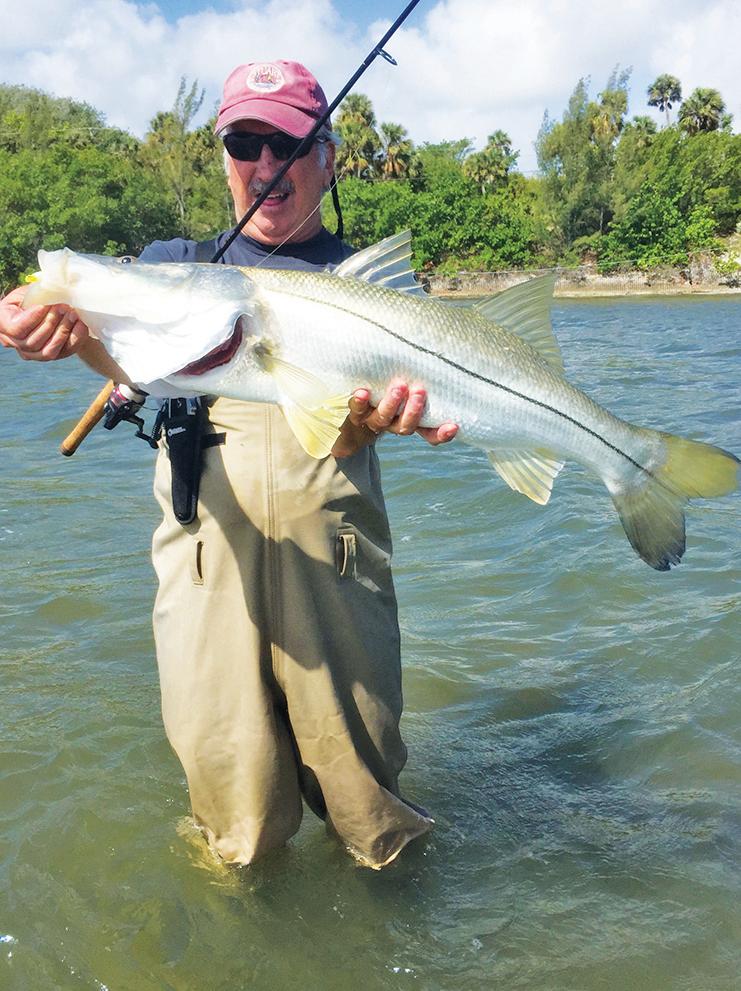



For more information, go to MyFWC.com.
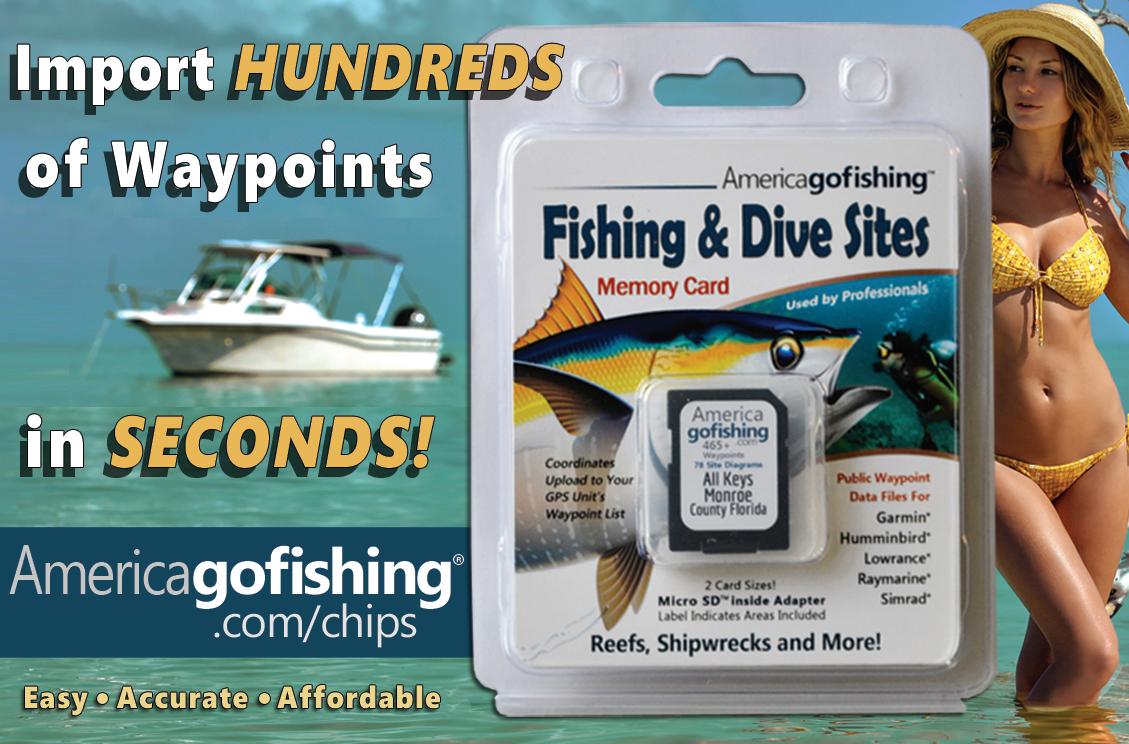




It’s on! You made a very long cast, and within a few cranks a sh grabs your lure and you’re engaged in a ght!


Long distance lures allow you to hook-up with sh other anglers can’t reach, but ghting sh with so much line out presents complications, mostly in the form of environmental elements the angler does not control.
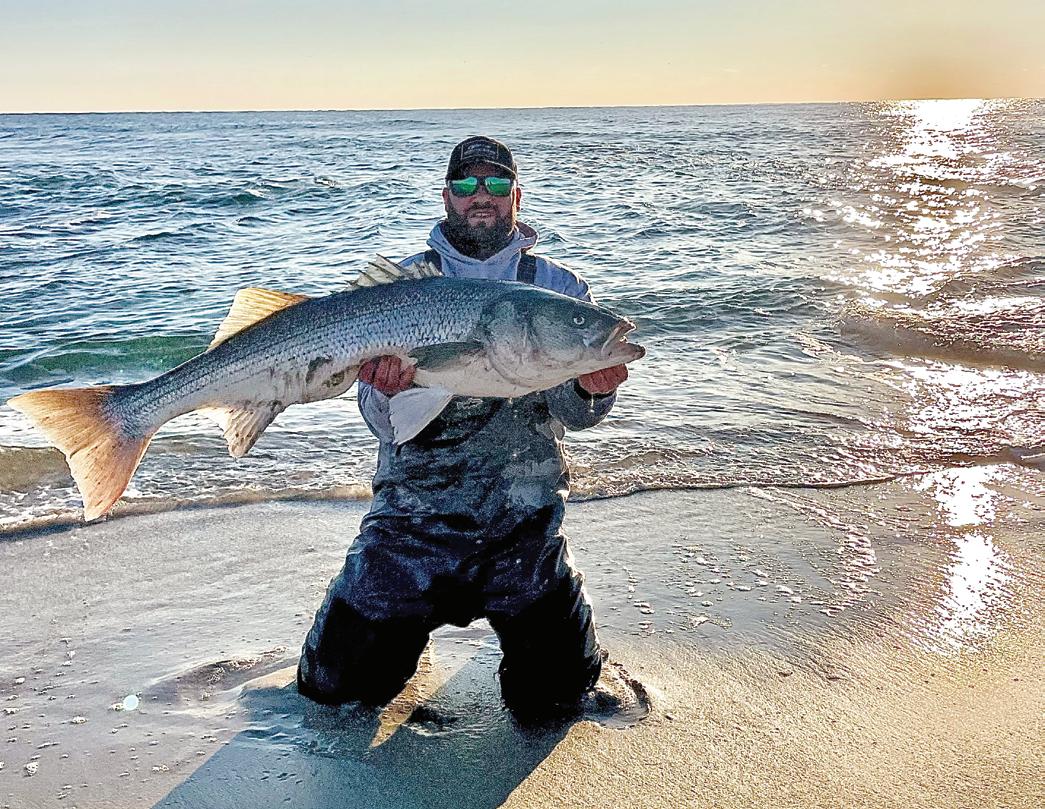

If you’re shing from a at sandy beach on a calm day with no waves, little current and no oating sargassum, then nothing is di erent. Just ght the sh and enjoy it. But when ghting a sh at great distance, elements like current or obstacles such as rocks or weeds become magni ed threats to successfully landing the sh. e more line you have in the water, the less direct in uence you have on the sh. e sh has more freedom to swim sideways or even directly at you. ere’s a greater chance your line will snag an encrusted boulder or load up with oating grass. Ripping currents and wave action are more pronounced during the ght, and sh—especially bigger ones— will use this to pull away.

Here are tactics to better ght sh from long distances.

• Keep the rod tip up and hold it high to keep as much line as possible out of the water or high in the water column. is limits the risk of snags and reduces drag on the line. I sometimes put the rod butt against my shoulder and hold the rod almost vertically to gain as much height as possible.


• When a sh swims or is pushed by waves or current into a snag-prone area, it’s o en counter productive to crank down and pull directly against the sh. Pulling hard works OK on small or mediumsized sh, but with larger sh I like to angle the rod horizontally and


sideways in the direction the sh is going. It’s like judo in that you use the sh’s momentum against it. By pulling the sh sideways, instead of directly against it, it will curve toward you. is is unconventional, but it has saved sh for me a number of times.
• When sh use strong currents during the ght, walk with them. Try to walk the same speed the sh is moving with the current and continue picking up line.
• Use a power-pull to put a lot of pressure on big sh. Keep the rod at a 30 to 45 degree angle from horizontal, and walk backward at constant speed. When I was guiding in Africa for tiger sharks and giant tarpon, this was the best way to bring sh closer to shore.

Legendary angler Patrick Sebile is a world record holder and an award-winning designer of innovative lures and shing gear. Check out his creations at abandofanglers.com.
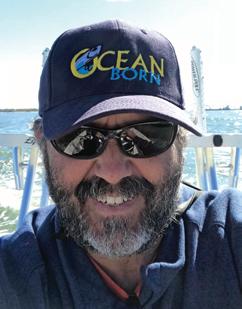
Perhaps Florida anglers are getting used to the regulations changes that closed fall harvest of ounder for the rst time last year. With a 45-day closure during the peak of the fall spawning movements, keeping ounder is by design illegal when it’s easiest to catch them. e season closure ran Oct. 15 through Nov. 30, and many Gulf of Mexico and Atlantic states enacted similar closures in the face of several years of falling ounder numbers. So, while you likely didn’t get to enjoy stu ed ounder at the anksgiving feast, you should be able to go catch, or gig, a doormat to serve at Christmas.









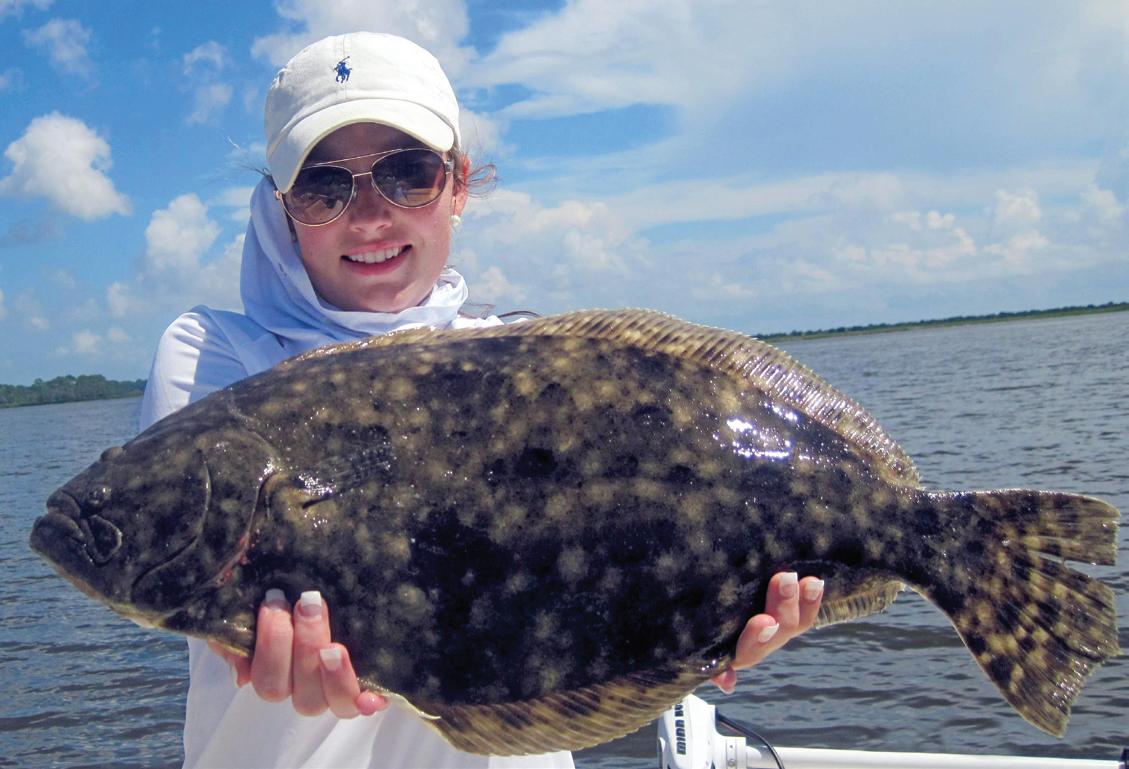


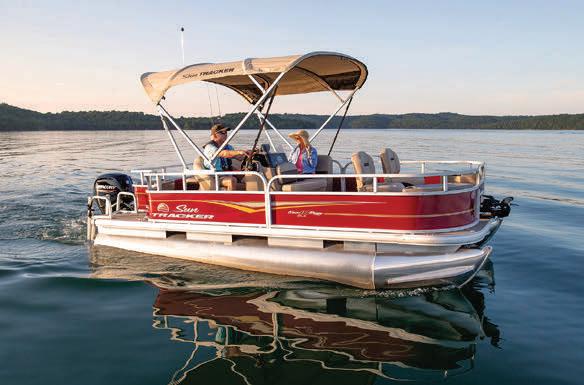


Starting Dec. 1, ounder harvest is allowed with a 14-inch minimum size limit and a daily bag limit of ve sh per person. ese regulations apply in state and federal waters o Florida. Legal gear includes spears, gigs, hook and line, seine and cast nets.
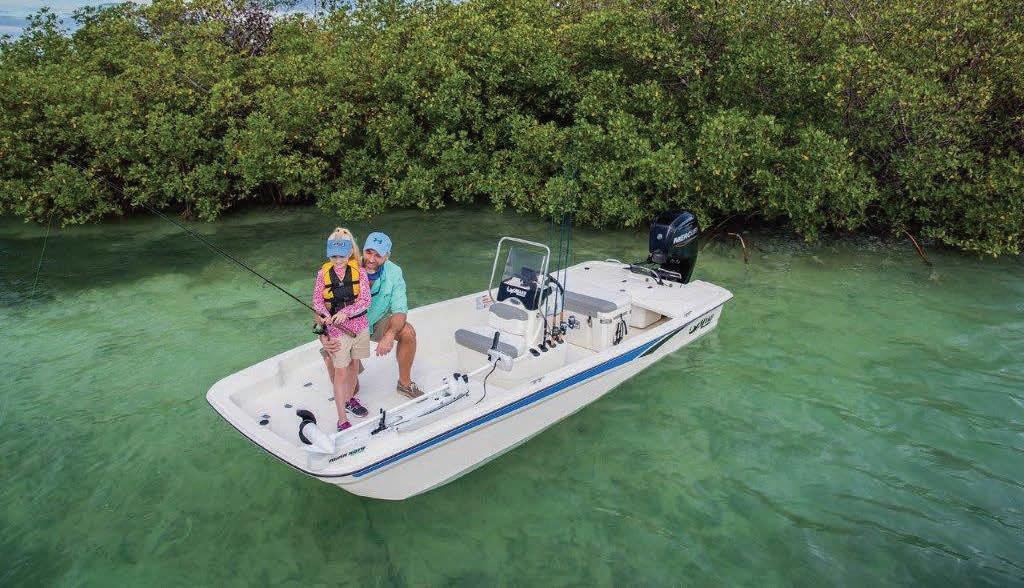
For more information, go to MyFWC.com.
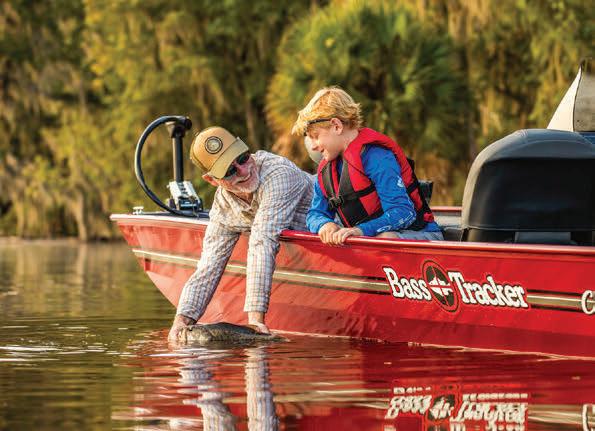


If you’re not familiar with shoal bass, they are a distinct species of black bass that evolved to inhabit the riverine shoals of the Apalachicola River Basin in Florida. ey are considered a Species of Greatest Conservation Need by the Florida Fish and Wildlife Conservation Commission because they are native only to one drainage worldwide, and habitat in that drainage was forever altered by dams.
e Chipola River, which roughly bisects the Panhandle to join the Apalachicola River at Sumatra, Fla., is home to Florida’s only known
reproducing population of shoal bass, and it is potentially the species’ most genetically pure population. Farther north, Georgia’s Chattahoochee and Flint rivers are part of the same drainage. ere, shoal bass are considered an excellent sport sh. ey grow to weights heavier than 9-pounds and o er a unique opportunity for anglers, especially y shers, because they inhabit swi -water shoals and will readily slam arti cial lures, topwaters and ies.
Shoal bass are in trouble in Florida, and FWC is on the case. In 2018, the Chipola River population of shoal bass was nearly destroyed by Hurricane Michael. Impacts from the storm resulted in nearly a 90 percent decline in the population. In May, 2022, biologists with the FWC’s Fish and Wildlife Research Institute and the Division of Freshwater Fisheries Management released 3,300 1- to 2-inch genetically pure, hatchery-spawned shoal bass from the Blackwater Fisheries Research and Development Center into the Chipola River.
Recent sampling discovered the released sh have made a signi cant contribution to the existing population. DNA analysis of n clips taken from shoal bass collected during these sampling events con rmed that 65 percent of the yearlings collected were from sh produced and released by Blackwater Hatchery. ese stocked shoal bass had grown to 4 to 6 in the four months since being stocked. Additionally, data suggests these stocked sh may comprise nearly 20 percent of the entire shoal bass population in the river.
“ e shoal bass population in the Chipola River has become a top priority of sheries biologists within the northwest region of Florida since Hurricane Michael,” said Fisheries Biologist Andy Strickland. “Management actions to suspend harvest and successfully stock shoal bass have yielded positive results for this unique black bass species.”
FWC biologists anticipate stocking additional hatchery reared shoal bass in the Chipola River in the spring of 2023 to increase the number of genetically pure sh in the population and eventually restore population numbers to pre-Hurricane Michael levels.


Currently a catch-and-release-only regulation is in e ect for shoal bass on the Chipola River and its tributaries.
To learn more, visit MyFWC/Freshwater.
In November the Georgia Department of Natural Resources certi ed a sh that tied the state record for Florida pompano. e sh, which weighed 1 pound, 7.68 ounces, was caught by a Florida woman who was at St. Simons Island, Ga. volunteering at a youth shing tournament.


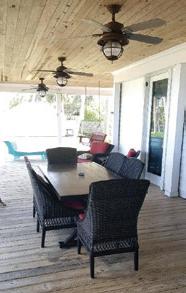








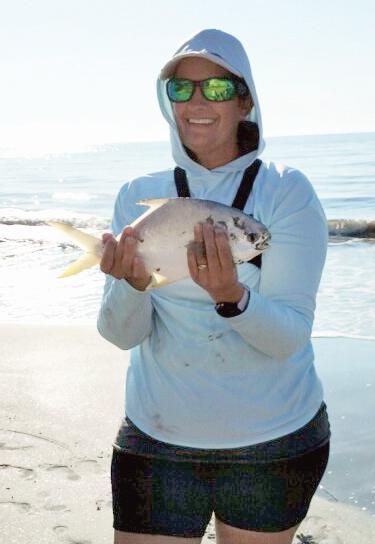

Cathy Sanders, of Palm Coast, Fla., landed her record-tying pomp while surf shing on St. Simons Island on Oct. 9. Her catch tied the previous record holder, Laura Cheek, who landed a 1-pound, 7-ounce pompano on Sea Island in 1982. Sanders’ pompano was 12 inches fork length.

Sanders was volunteering with the Kids Can Fish Foundation’s Running of the Bulls youth tournament when she caught the sh. She was surf shing with a 12-foot Okuma Rockaway rod and Okuma Rockaway 6000 reel. As bait, she used Fishbites EZ Crab (Electric Chicken) with Sinker Guys glass beads and salted shrimp on 20-pound high visibility mono lament. Her terminal rig was a 2/0 circle hook on a double drop rig with 3-ounce Guy Sputnik sinker.



Under the rules of the Georgia Saltwater Game Fish Records Program, Sanders’ catch quali ed as a tie because it weighed more than the current record, but did not exceed the record by more than 4 ounces.
e IGFA all-tackle world record Florida Pompano weighed 8 pounds, 4 ounces. It was caught by Barry Huston in St. Joe Bay, Fla. in 1999.
See Georgia’s saltwater records at CoastalGaDNR.org/SaltwaterRecords.

Like fishing, hunting is for early risers — those who find contentment and peace in getting out into nature early. But that’s not all you’ll find in wild Florida. From the Panhandle to the Everglades, we have some of the most accessible and affordable public hunting lands in the country. Six million bountiful and beautiful acres are closer than you think. So if you’re already an early riser, rise to the exciting challenge of hunting today.

The very best hunting knives possess a perfect balance of form and function. They’re carefully constructed from fine materials, but also have that little something extra to connect the owner with nature. If you’re on the hunt for a knife that combines impeccable craftsmanship with a sense of wonder, the $79 Huntsman Blade is the trophy you’re looking for.
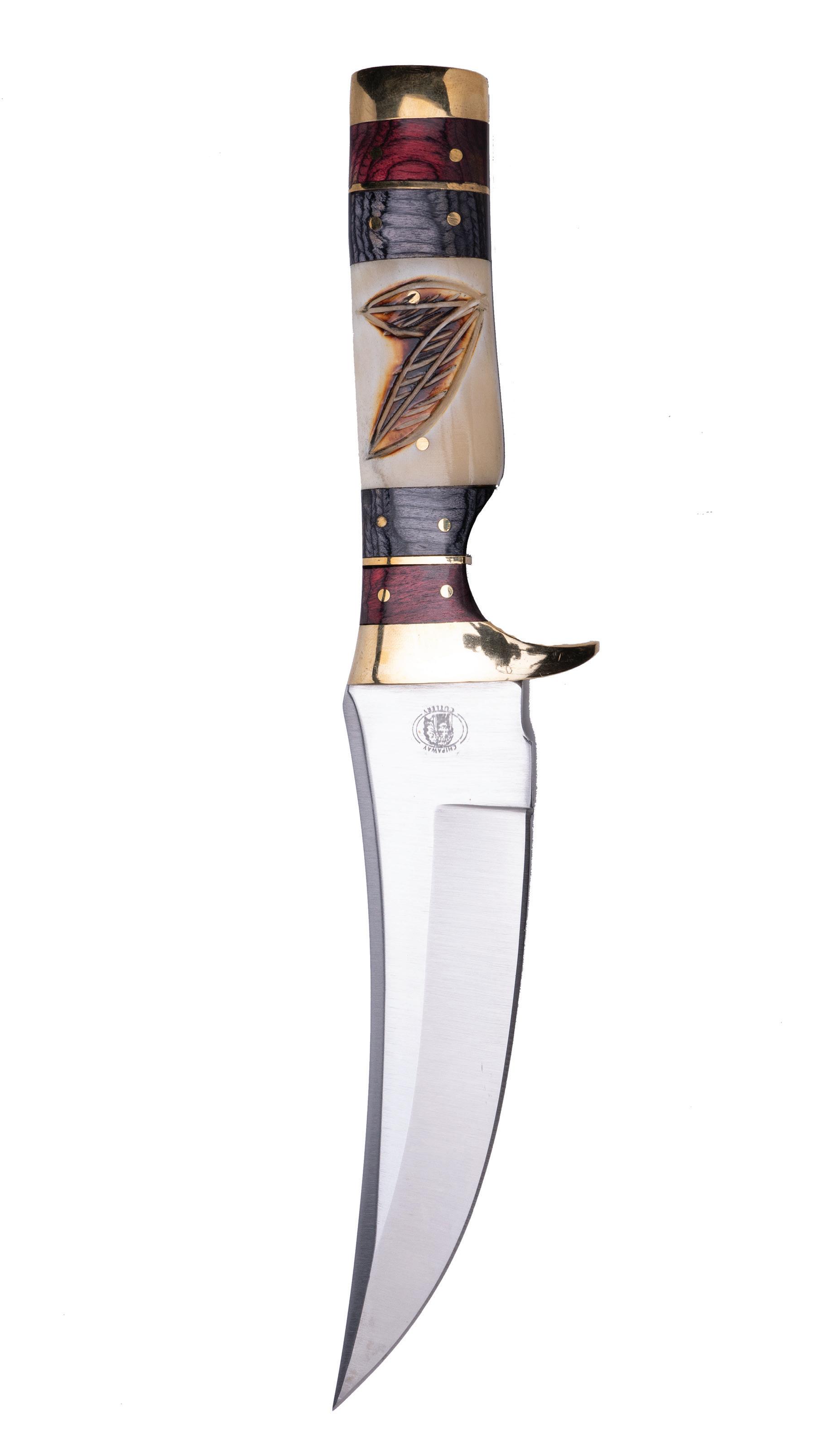
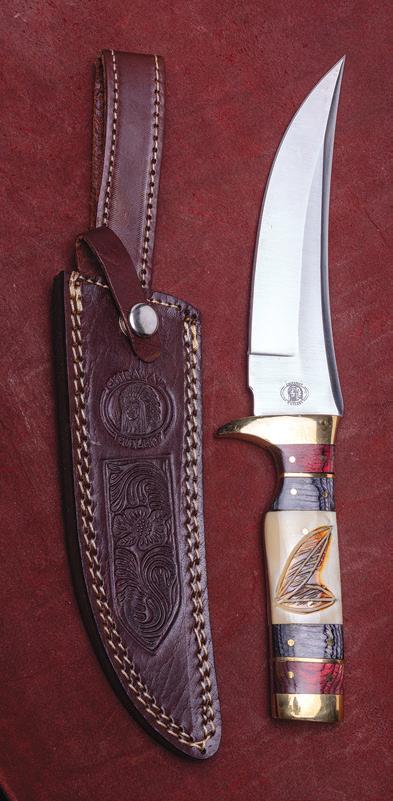
The blade is full tang, meaning it doesn’t stop at the handle but extends to the length of the grip for the ultimate in strength. The blade is made from 420 surgical steel, famed for its sharpness and its resistance to corrosion.
The handle is made from genuine natural bone, and features decorative wood spacers and a hand-carved motif of two overlapping feathers— a reminder for you to respect and connect with the natural world.




This fusion of substance and style can garner a high price tag out in the marketplace. In fact, we found full tang, stainless steel blades with bone handles in excess of $2,000. Well, that won’t cut it around here. We have mastered the hunt for the best deal, and in turn pass the spoils on to our customers.
But we don’t stop there. While supplies last, we’ll include a pair of $99 8x21 power compact binoculars and a genuine leather sheath FREE when you purchase the Huntsman Blade.


Your satisfaction is 100% guaranteed. Feel the knife in your hands, wear it on your hip, inspect the impeccable craftsmanship. If you don’t feel like we cut you a fair deal, send it back within 30 days for a complete refund of the item price.
Limited Reserves. A deal like this won’t last long. We have only 1120 Huntsman Blades for this ad only. Don’t let this beauty slip through your fingers. Call today!
“This knife is beautiful!” — J., La Crescent, MN
“The feel of this knife is unbelievable...this is an incredibly fine instrument.” — H., Arvada, CO
The question of lure size is o en pondered in the shing world. Di erent circumstance requires a di erent mentality, but one thing is for certain, the sh did not read any articles, attend any seminars or watch that YouTube video. ey eat what they want, when they want, but I have an approach that I nd useful in deciphering the riddle.
As winter approaches, it brings changes to our estuaries: cooler water temps, a change in the type and abundance of forage, less pressure from boaters, and in some areas, much better water clarity. ere are two trains of thought on lure size when it comes to winter shing in the bays. Should I go bigger or smaller? I know anglers who immediately upsize for the entire season, while others downsize for its duration.














Both can be e ective, but here is how I typically tackle early winter shing.
Cooling water temps and increasing frequency of cold fronts put the sh on both spectrums of the feeding attitude. Unlike more stable weather patterns, when sh are less a ected and feed more consistently, these fronts can make them, for a lack of a better term, moody.





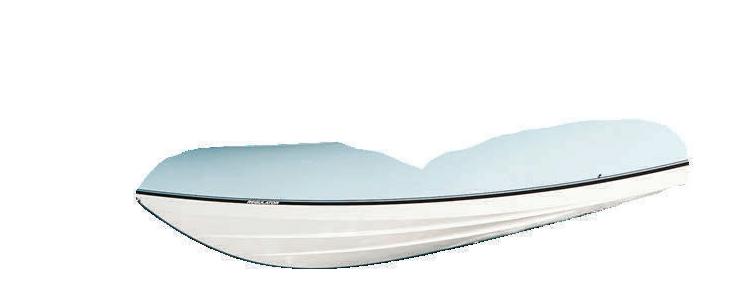

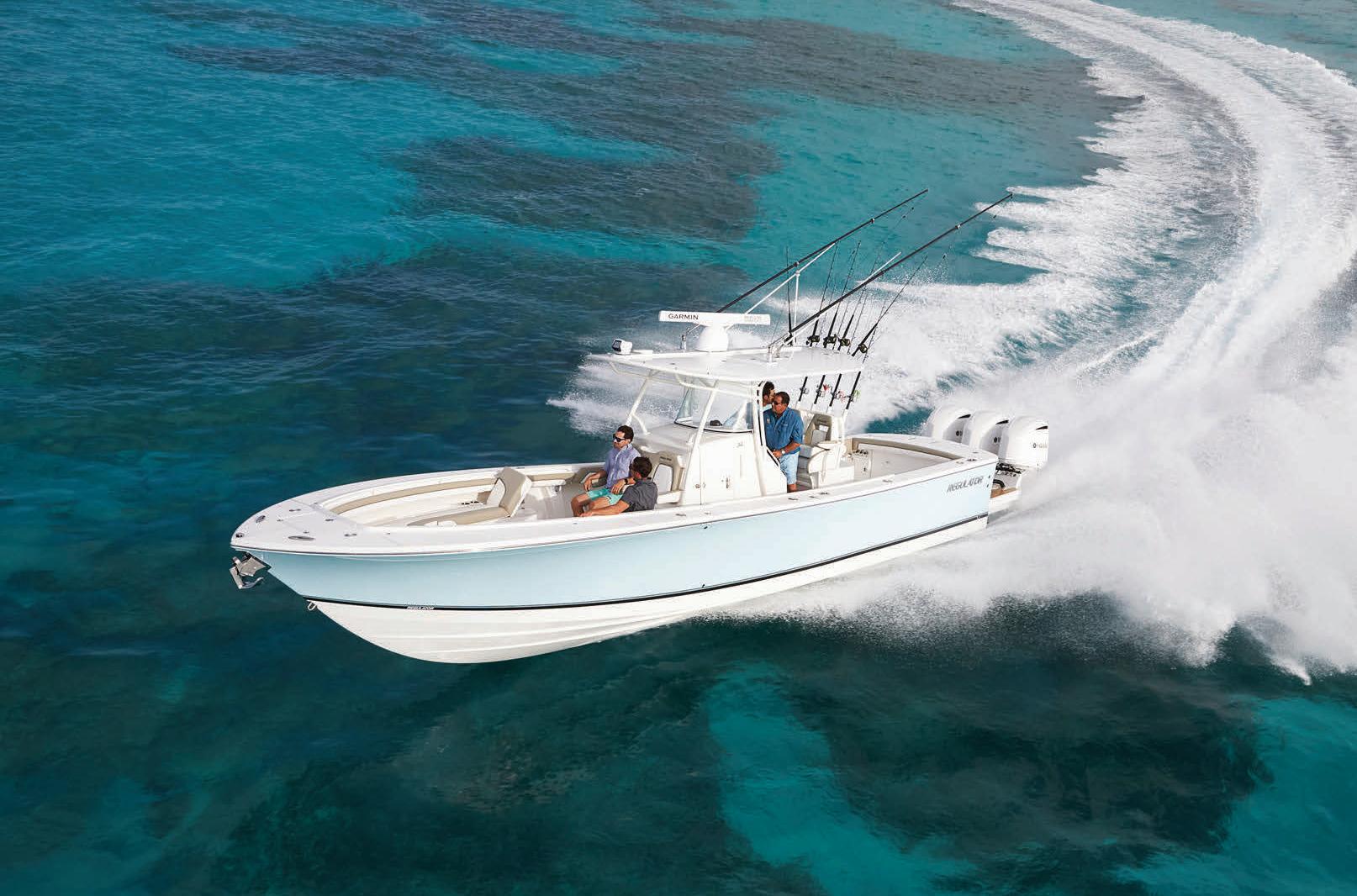
Late fall and early winter can be some of the best inshore shing of the year. Schools of
bait ushed from the bays with the dropping tides are followed by hungry specks and reds. In these situations, I like to use a smaller lure. Generally, they feed on shrimp or smaller bait sh, and having a lure of similar size is a good idea. When they are following these schools, I like non-natural colors so the sh have something to key in on when bait is abundant. I like my lure’s color to stand out in the fall feeding frenzy.
Now, for the other end of the mood swing, the inactive period caused by post-frontal conditions. is is another situation when I favor smaller lures in early winter. When the bite is o , smaller o erings entice bites from non-aggressive sh. Using myself as an example, if I am not hungry, the chance of me driving to a restaurant for a steak dinner are slim, but I might grab a few peanuts for a quick bite just because they are on the counter.
e nal reason is clearer water. Some bays I sh will have 1 to 2 feet of clear-green water in the summer, but 6 to 7 feet of air-clear water in winter. ese sh are not accustomed to this transitional clarity. When I can see my lure bouncing in the sand in depths of 7 feet, a much smaller lure will produce more bites.
I hope these tips help you catch more sh this winter, and next month I will explain my transition to larger lures as we press deeper into winter’s grip.
ago, Persians, Tibetans and Mayans considered turquoise a gemstone of the heavens, believing the striking blue stones were sacred pieces of sky. Today, the rarest and most valuable turquoise is found in the American Southwest–– but the future of the blue beauty is unclear.
On a recent trip to Tucson, we spoke with fourth generation turquoise traders who explained that less than five percent of turquoise mined worldwide can be set into jewelry and only about twenty mines in the Southwest supply gem-quality turquoise. Once a thriving industry, many Southwest mines have run dry and are now closed.

We found a limited supply of turquoise from Arizona and purchased it for our Sedona Turquoise Collection . Inspired by the work of those ancient craftsmen and designed to showcase the exceptional blue stone, each stabilized vibrant cabochon features a unique, one-of-a-kind matrix surrounded in Bali metalwork. You could drop over $1,200 on a turquoise pendant, or you could secure 26 carats of genuine Arizona turquoise for just $99




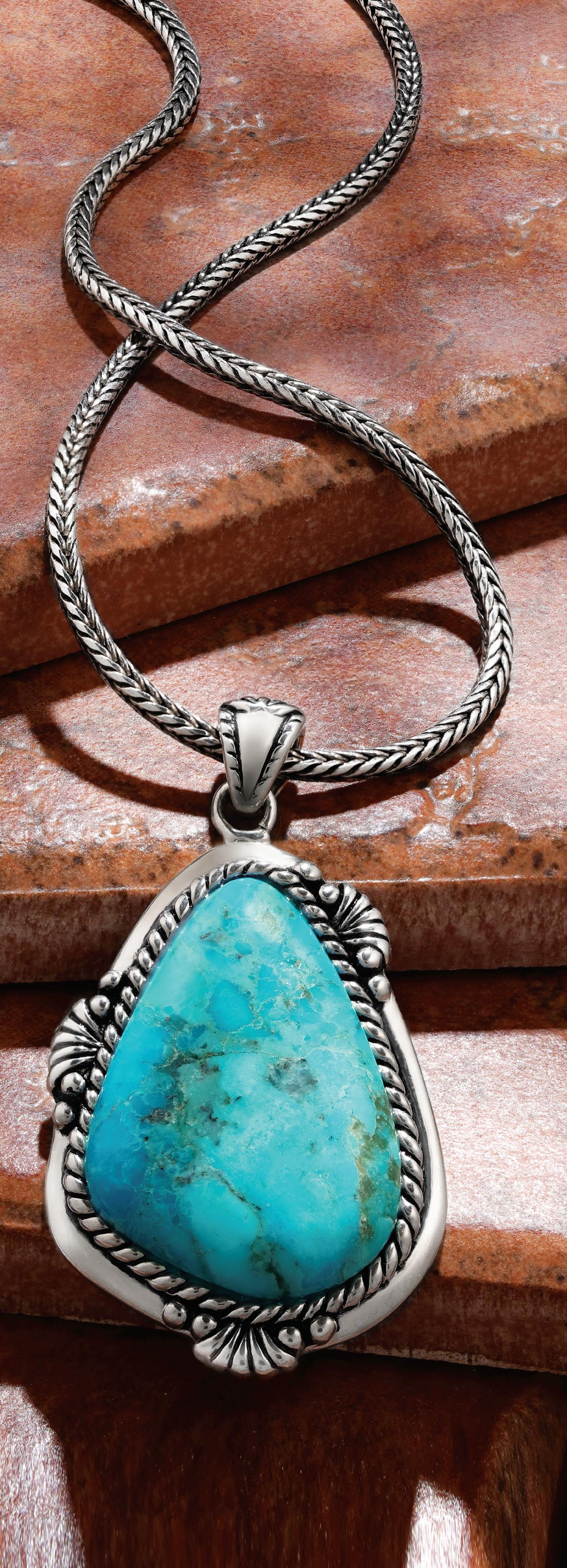
days
don’t
Ohio Angler Gregg Gallagher caught a 10.15-pound smallmouth bass on Nov. 3 that once certi ed should be a new Lake Erie record. e 23 ¾-inch sh is also the largest bronzeback ever caught from the Great Lakes.
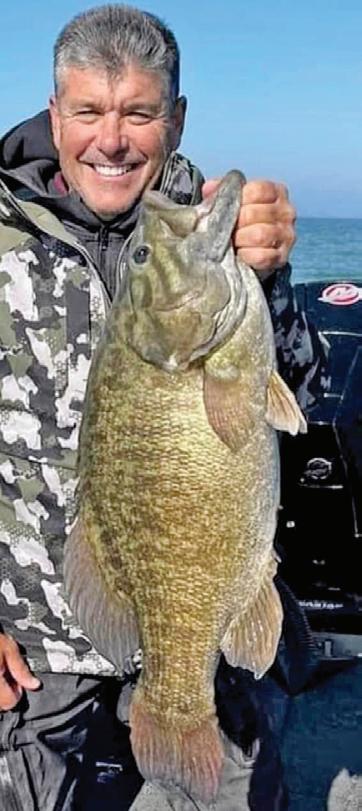



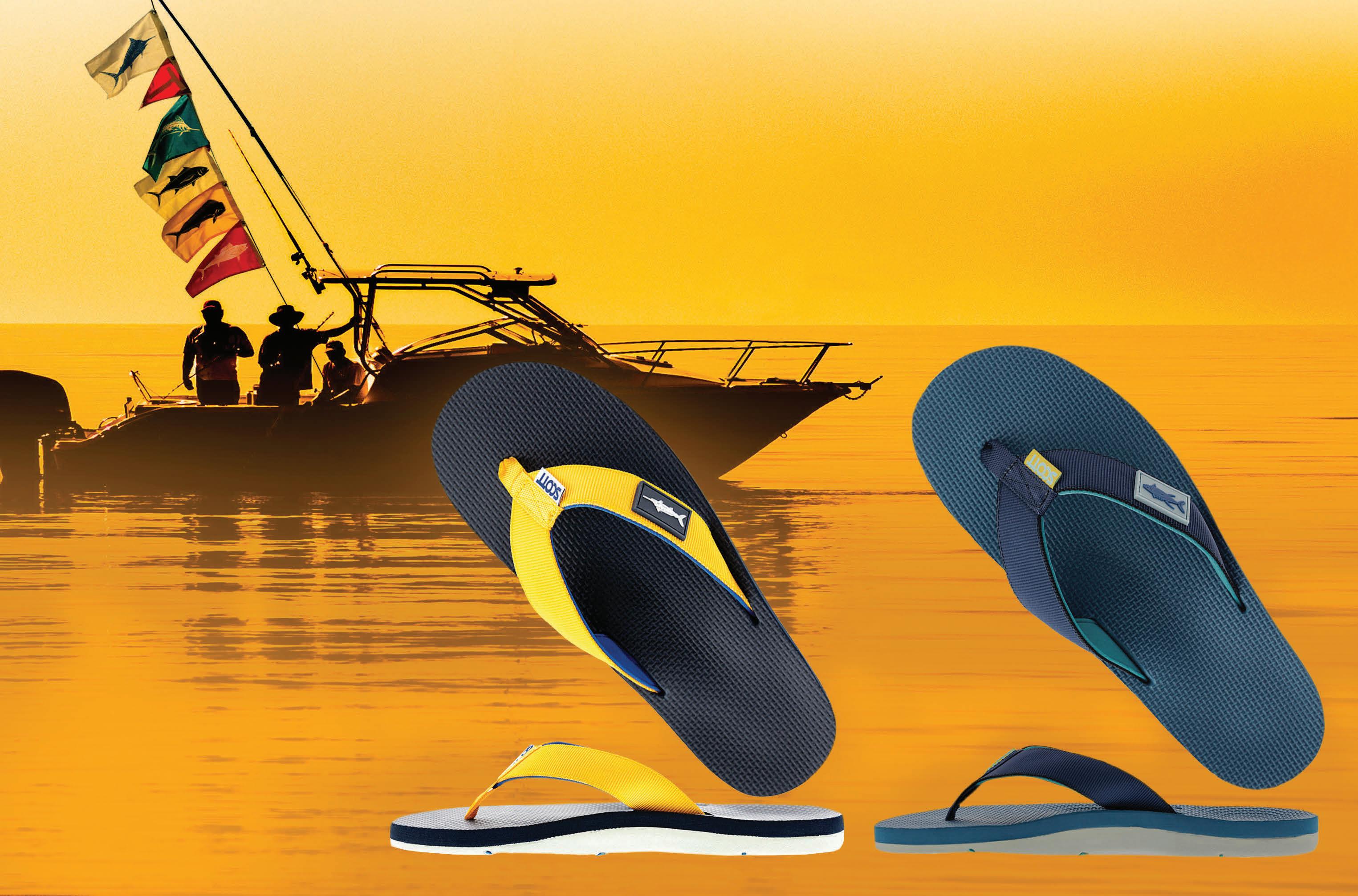


Gallagher told In-Fisherman his was the result of his son’s extensive time surveying bait and bottom structure. With sonar, they were able to do what some call video-game shing and target individual sh with drop shot rigs. He was shing 8-pound test.
“With an abundance of bait sh and unique bottom composition located a er long days behind the graphs, we dropped down our forward-facing sonar and we were able to individually target these pelagicesque smallmouth,” he told In-Fisherman. “On what turned out to be the most memorable cast of my life, my bait got hit before it even hit the bottom and my rod quickly doubled over. I honestly thought I had hooked into a sheephead and not a smallmouth. We quickly learned we had just caught the smallmouth of a lifetime.”
e monster smallmouth is the only certi ed 10-plus-pounder ever caught from the Great Lakes. It should beat out the Canadian record of 9.84 pounds, which was set 68 years ago. It is also heavier than the Ohio state record, which weighed 9 pounds, 8 ounces and was caught in 1993.
e world record smallmouth bass weighed 11 pounds, 15 ounces. It was caught from Tennessee’s Dale Hollow Lake in 1955.
You raise the flags of the fish just caught to show you weren’t skunked.
Once onshore you can take it a step further showing your fellow anglers your catch of the day wearing “slippahs” from Scott Hawaii.
Instead of spending the next few months holed up inside, get yourself a good parka, nd a window of decent weather and go shing. Believe it or not, for some sheries winter o ers some of the best action of the year. Here are a few ideas to help you combat cabin fever.
By CAM Stais time of year, wahoo pile up around the Bahamas. Some of the largest sh of the year will show up over the next couple of months.
High-speed trolling is the technique that allows captains to cover lots of water along rocky ledges, color changes, temperature breaks and dropo s. ’Hoos hunt in packs, so multiple hook-ups and double-digit days are possible. is shery requires some forethought and perhaps some exibility. ey bite best around the full and new moons, but you’ll de nitely want to avoid fronts and those wicked north winds.

December







the Atlantic Coast of South Florida becomes one of the best sail sh destinations in the world. Release ags will be ying along the edge of the Gulf Stream from roughly Fort Pierce down through the Keys.
For this bite, you’ll want to sh when the weather’s a little rough. With strong winds from the north, tailing conditions push sail sh high in the water column to feed. ey surf the swells and it’s possible to sight sh for them, which is about as exciting as shing gets.
3) The Outer Banks: In winter, North Carolina’s Outer Banks are the destination for several migrations which bring excellent shing to the island chain from Oregon Inlet down past Ocracoke.
Out of Hatteras, it’s a short ride out to the edge of the Gulf Stream, and this time of year tuna congregate there to feast on a bounty of bait sh. Big blue n tuna 200 pounds and larger are on the prowl, and anglers can also do battle with black n, yellow n and bigeye tunas.
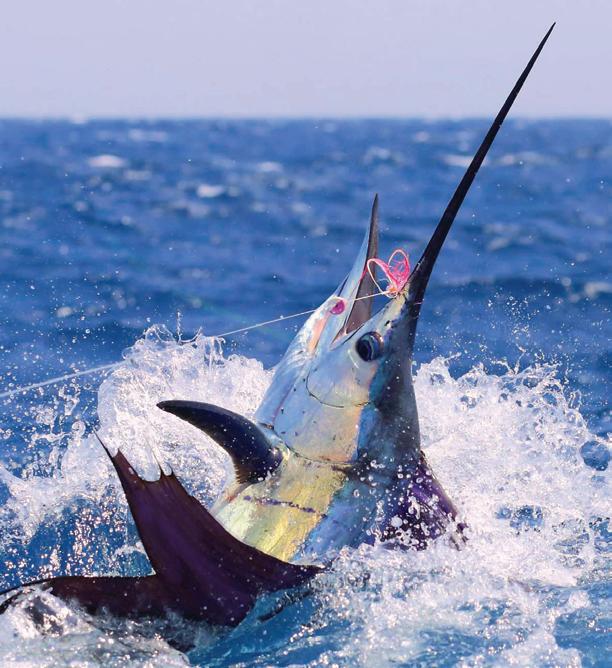
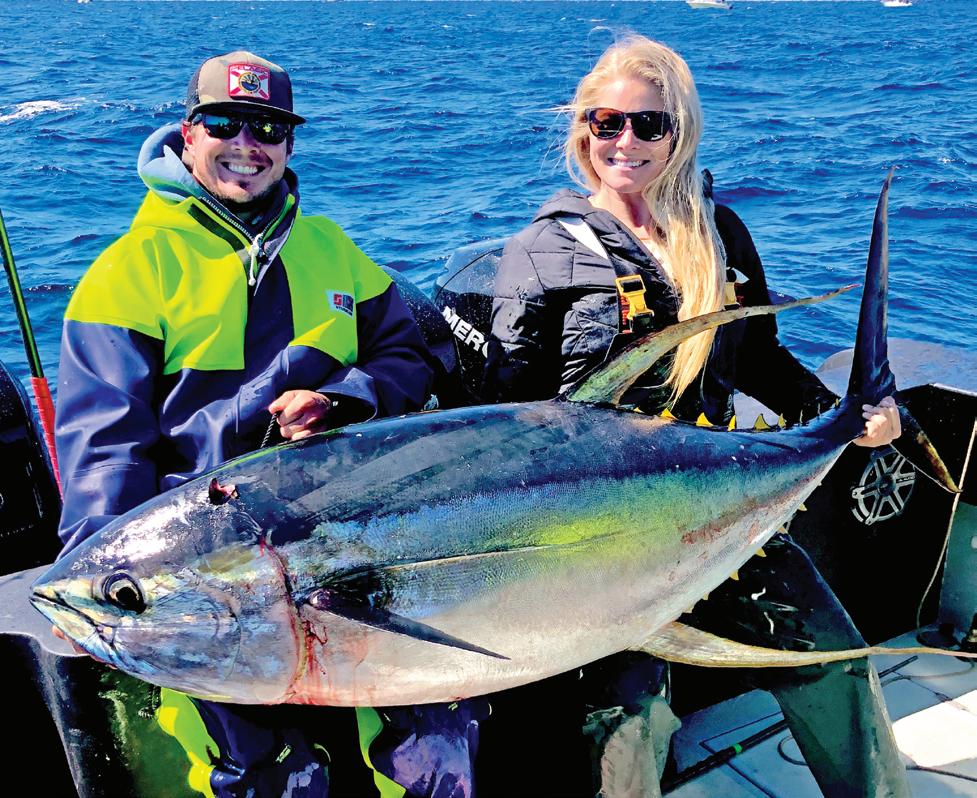


At the same time, big schools of striped bass will be marauding bait sh on the beaches and in the inlets. Surf anglers can encounter them blitzing menhaden by looking for bait and birds. Charter boats do good business this time of year trolling while keeping eyes peeled for stripers herding and crashing bait balls.
4) South Padre Island, Texas: Way down on the Mexican border, South Padre Island is as far south as you can go in Texas. e winters are mild and the shing is good year-round.
When water temps drop, snook pile into the canals and school up. ese schools of sh can be giant, and they are suckers for arti cials. At the same time, the grass ats experience the clearest water of the year. Red sh, big trout and black drum cruise the ats, where anglers can sight sh them in shin-deep water.

5) Delayed Harvest Trout: On the East Coast from Maryland down to Georgia, most states have developed robust delayed harvest trout sheries which keep y shers on the stream through the winter. ese specially regulated sheries are catch-and-release only through the cooler months and most of them have single-hook, arti cial-only regulations.
Most delayed harvest streams are heavily stocked, usually with some largerthan-normal hatchery sh. Since you can’t keep them, they stay in the creeks and rivers all winter long. Maryland, Pennsylvania, North Carolina, South Carolina and Georgia are some of the states with excellent delayed harvest programs. See the state wildlife agency websites for information.
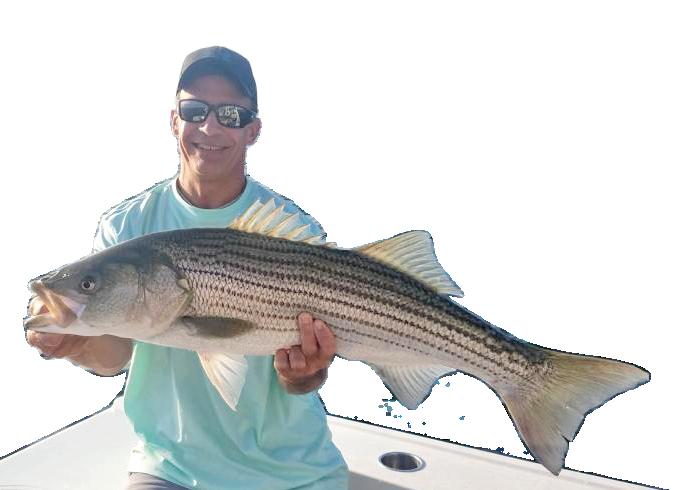
For the rst time in a while, sheries managers are reporting some good news about striped bass populations on the Atlantic Coast. In early November, e Atlantic States Marine Fisheries Commission (ASMFC) accepted an updated 2022 stock assessment that looks good enough that no additional harvest cuts will be needed.
is stock assessment found that rock sh stocks are still over shed but they are not currently experiencing over shing. e female spawning biomass appears to have been on a modest upward trend for at least the last three years, but at an estimated 143 million pounds is still far below the 235-million-pound target for rebuilding.
Total mortality in 2021 from commercial and recreational shing was estimated at 0.14, which is below the mortality threshold of 0.20 as well as below the mortality target of 0.17.
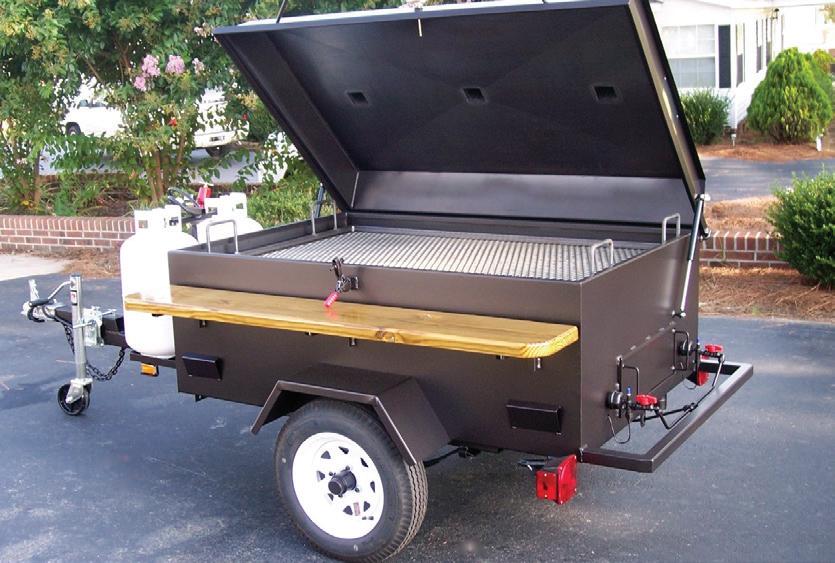

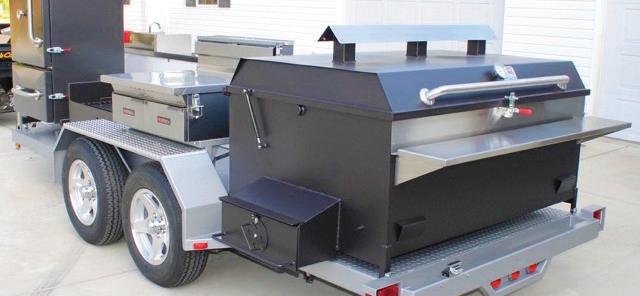


What does this mean for anglers?

Currently, a reduction in catch is not needed, and the rebuilding program is on schedule to declare the striped bass stock rebuilt by 2029.
“ is 2022 assessment was the rst check-in point for progress toward stock rebuilding by 2029,” said Board Chair Marty Gary with the River Fisheries Commission. “It is extremely important shery removals and conduct regular stock assessments to keep evaluating rebuilding progress and stay on track.”


e next stock assessment update is scheduled for 2024, and the Board will review the 2022 removals as soon as the data are available to evaluate whether catch remains at sustainable levels.
For more information, visit www.asmfc.org.










“Love at first sight! Without a doubtone of my favorite pieces from Stauer!”
– N. B., Mattapoisett, MA
Spoil her (and your wallet) with sparkling Sky Blue Topaz for just $39

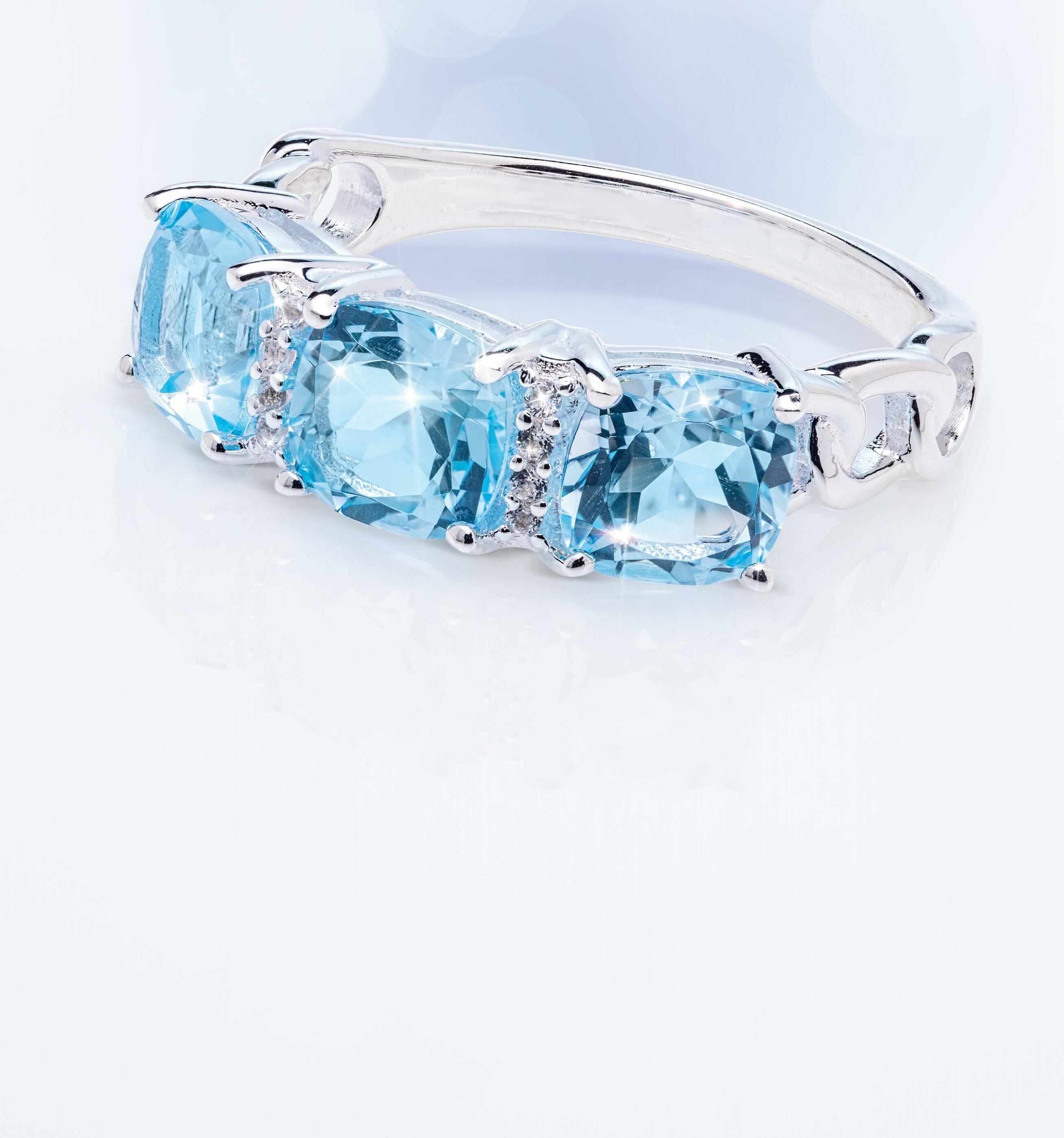
Going over the top on jewelry doesn’t have to mean going overboard on the cost. We’re in the business of oohs and ahhs without the ouch, which is why we can bring you a genuine sky blue topaz ring for a price that simply can’t be beat.
Sky blue topaz is aptly named, as its translucence and clarity is absolutely heavenly. If you are looking to mark a milestone or make any occasion special, the Sky Blue Topaz Ring is all you need.
is elegant ring features 2 1/2 carats of ethereal sky blue topaz in three perfectly-faceted cushion cut gemstones. And, the .925 sterling silver setting is nished in tarnish-resistant rhodium for added durability and superior shine.
You could spend nearly a $1,000 on a sterling silver ring set with a blue topaz stone. But, with Stauer in your corner, the sky’s the limit for a ording the extraordinary. Priced at just $39, you can treat her to the Sky Blue Topaz Ring set in .925 sterling silver and save your money and your love life all at the same time.
Satisfaction guaranteed or your money back. Indulge in the Sky Blue Topaz Ring for 30 days. If you aren’t perfectly happy, send it back for a full refund of the item price.
Limited Reserves. Don’t let this gorgeous ring slip through your ngers. Call today!
